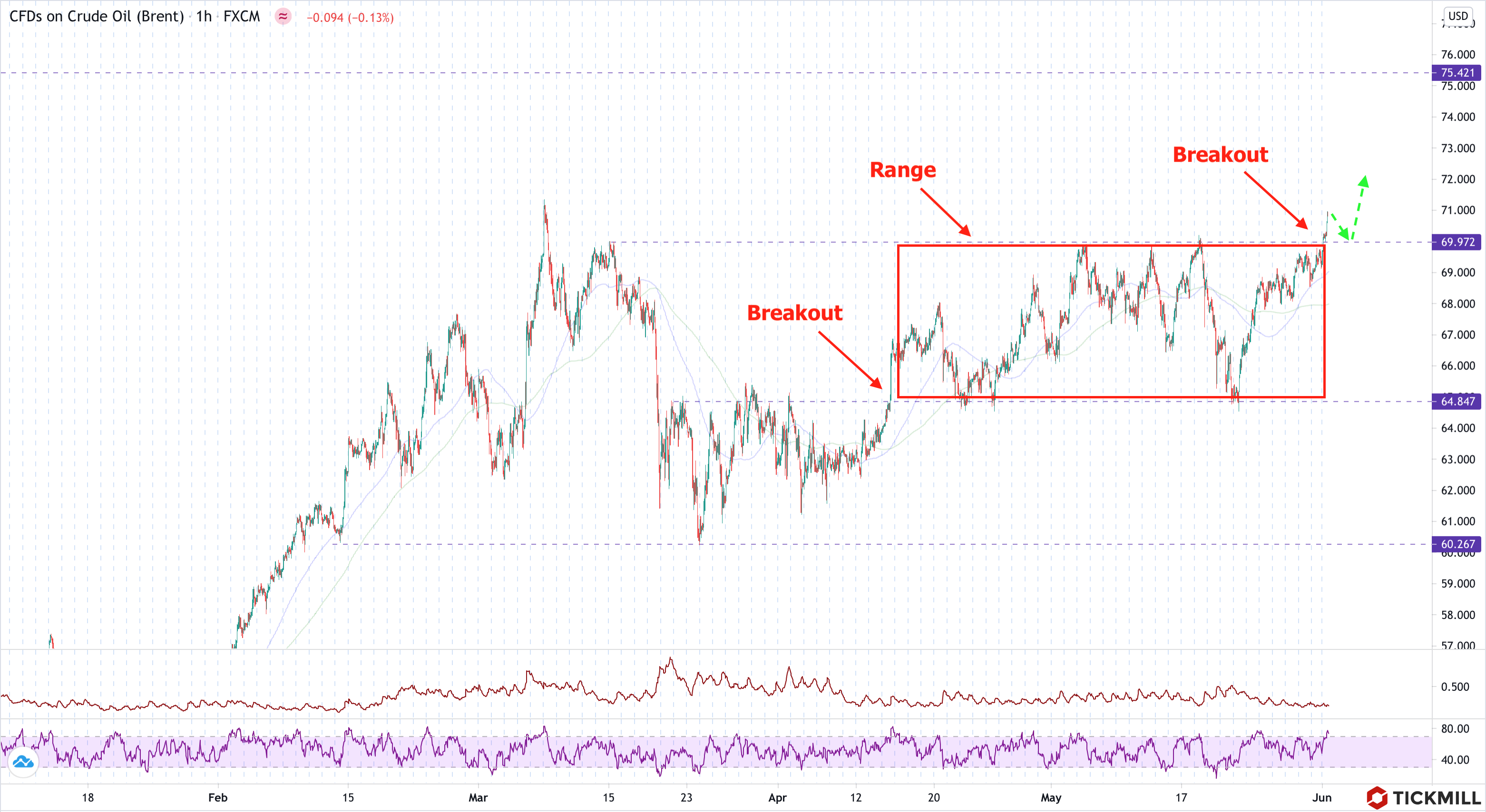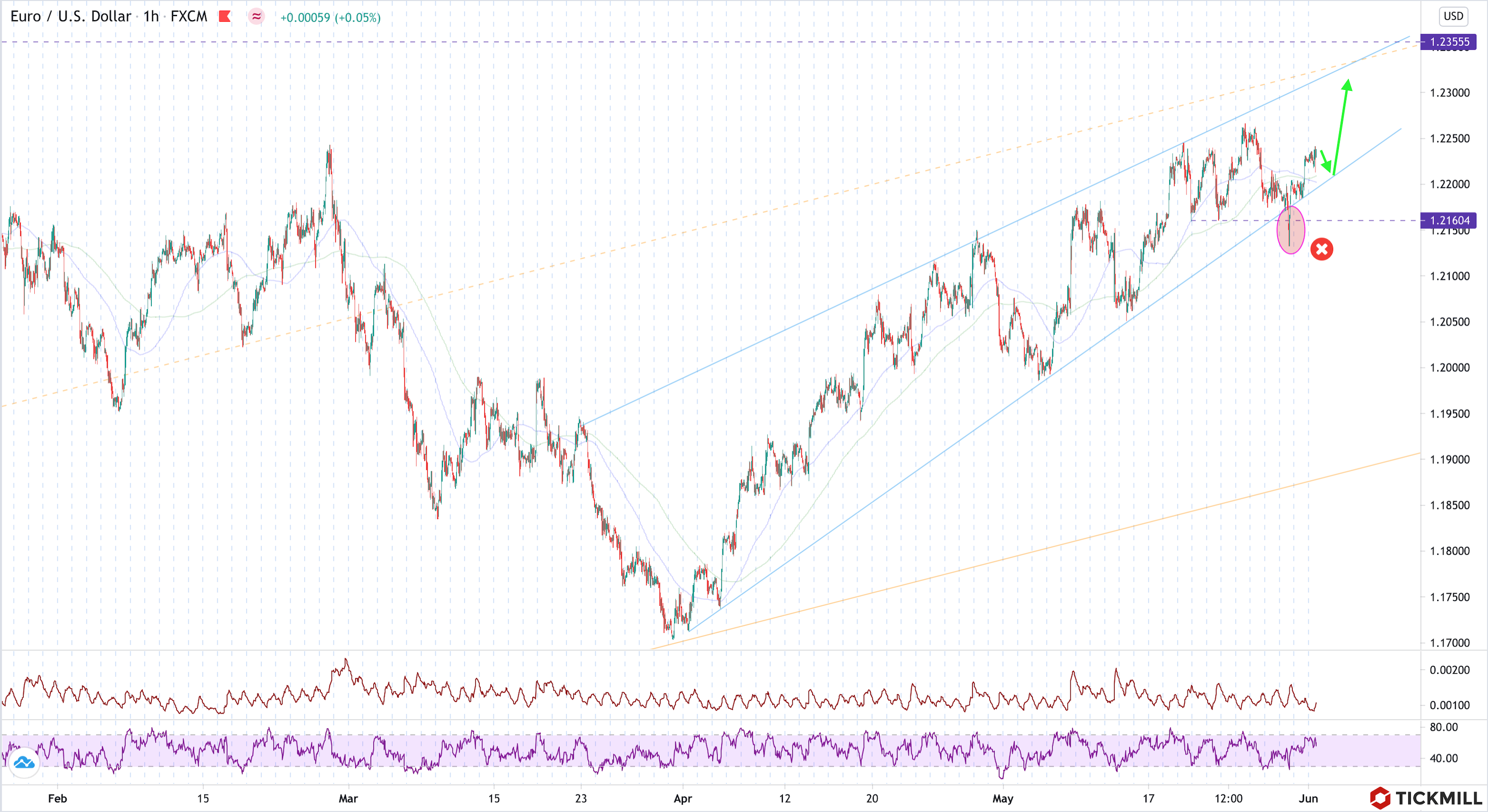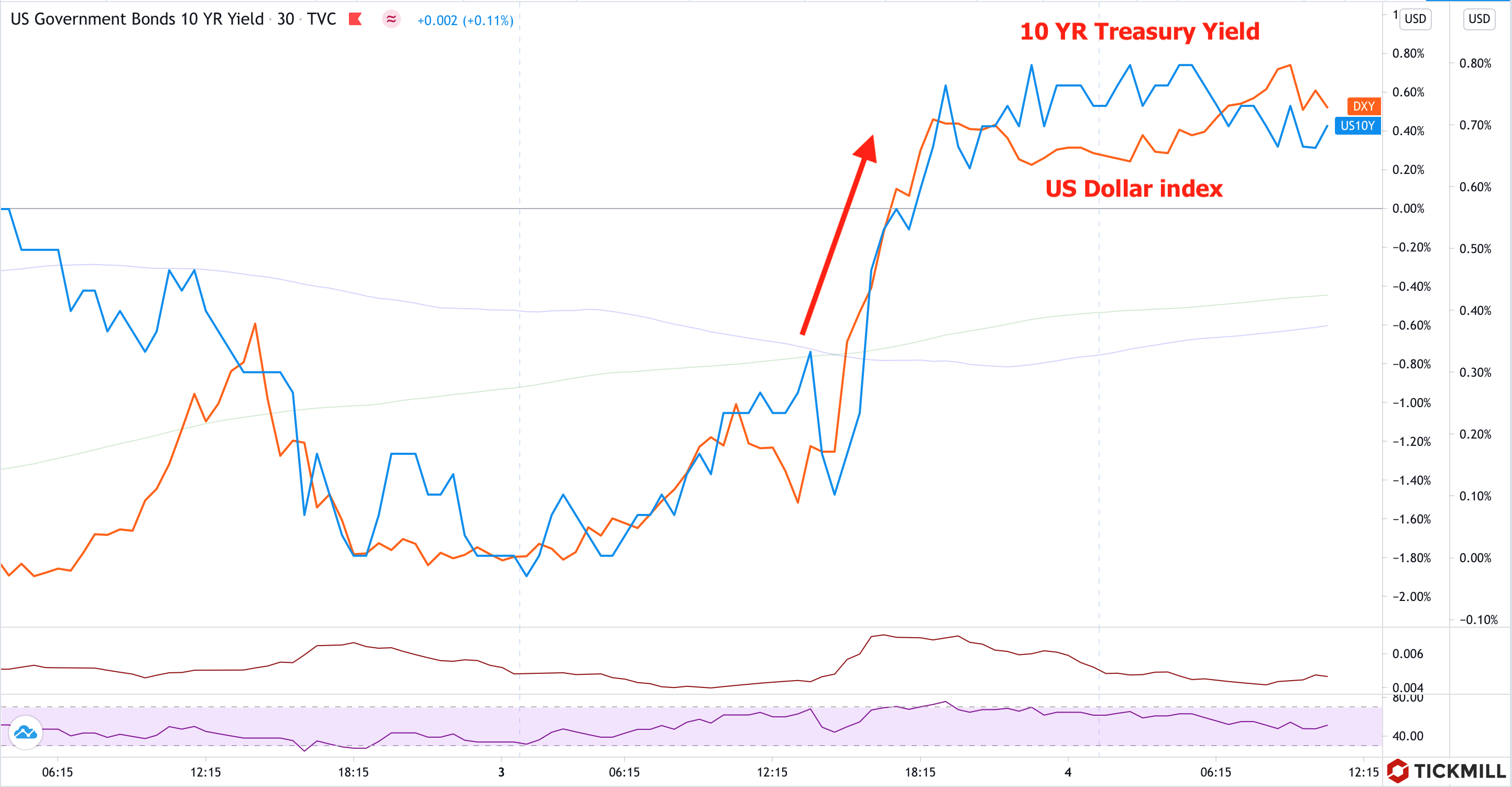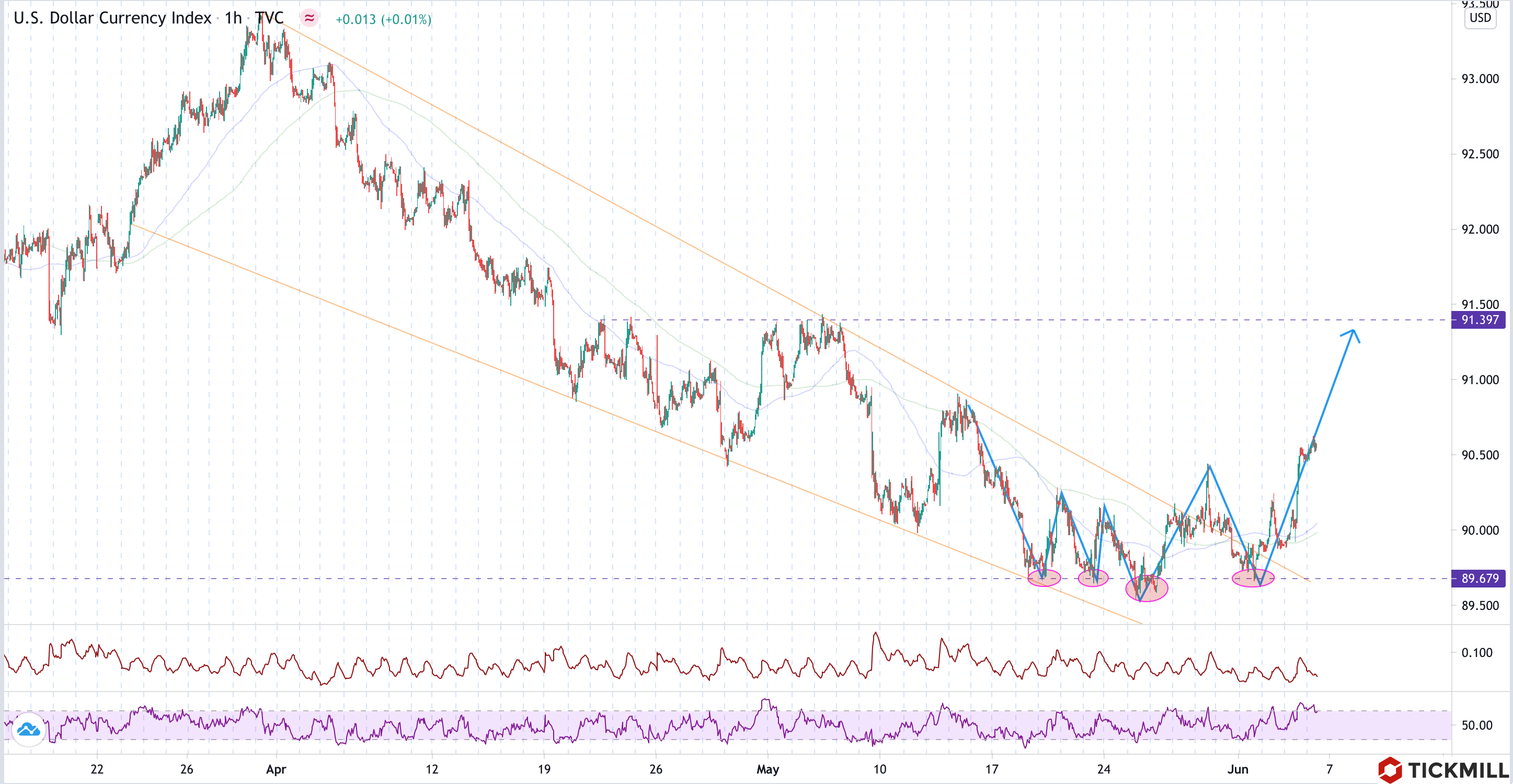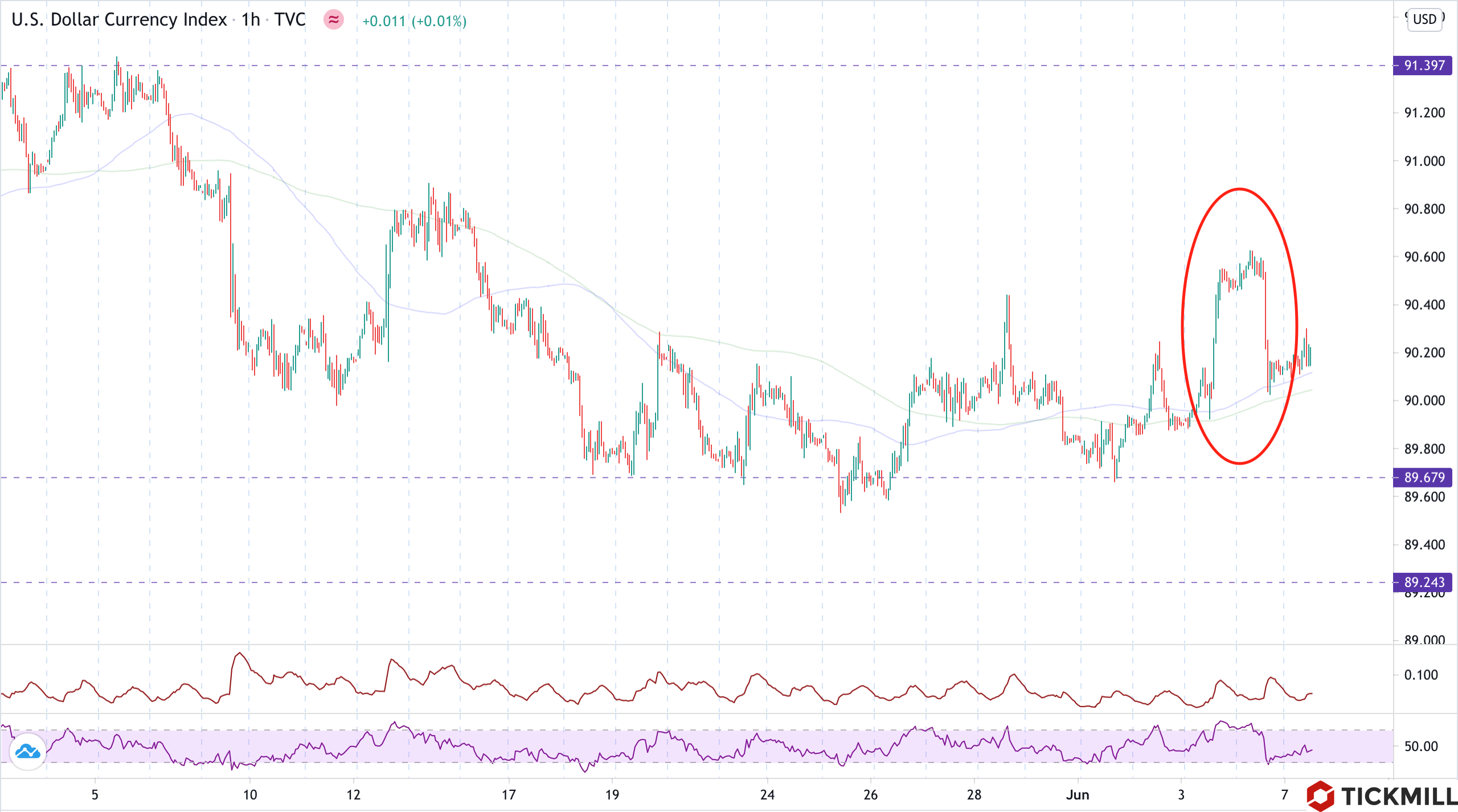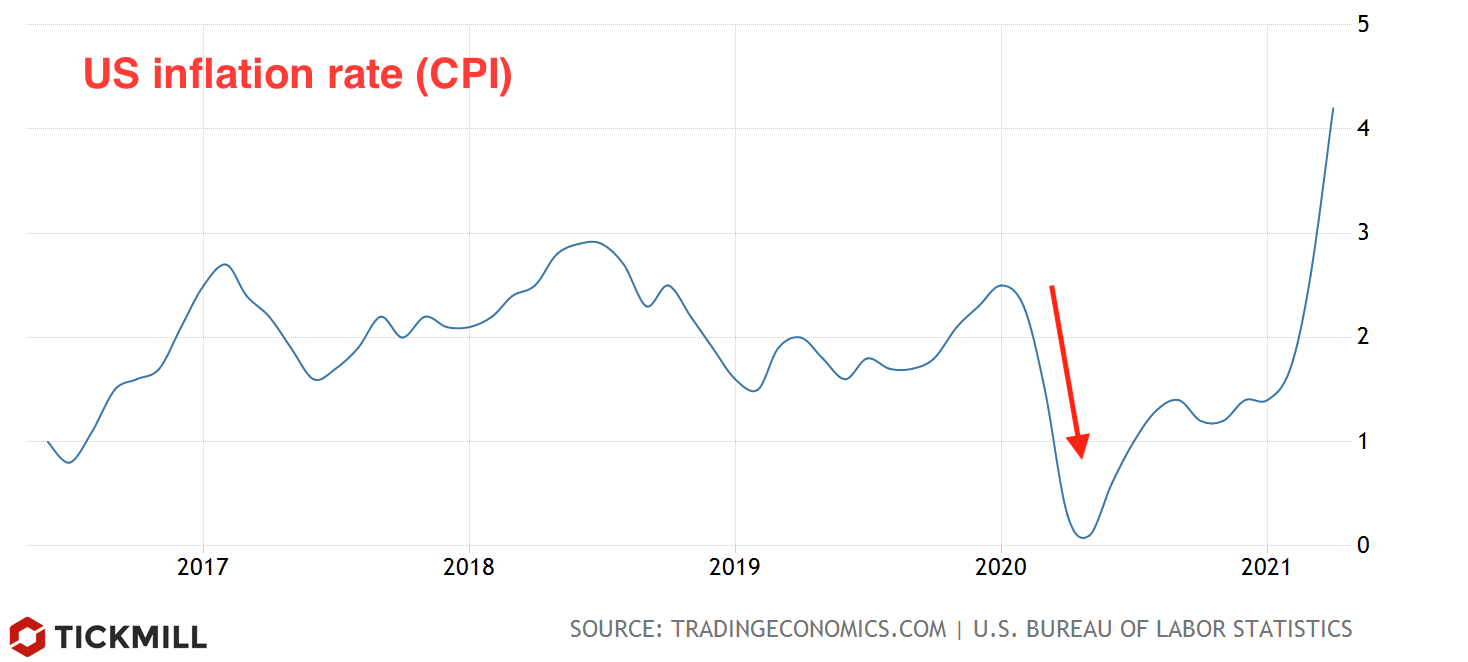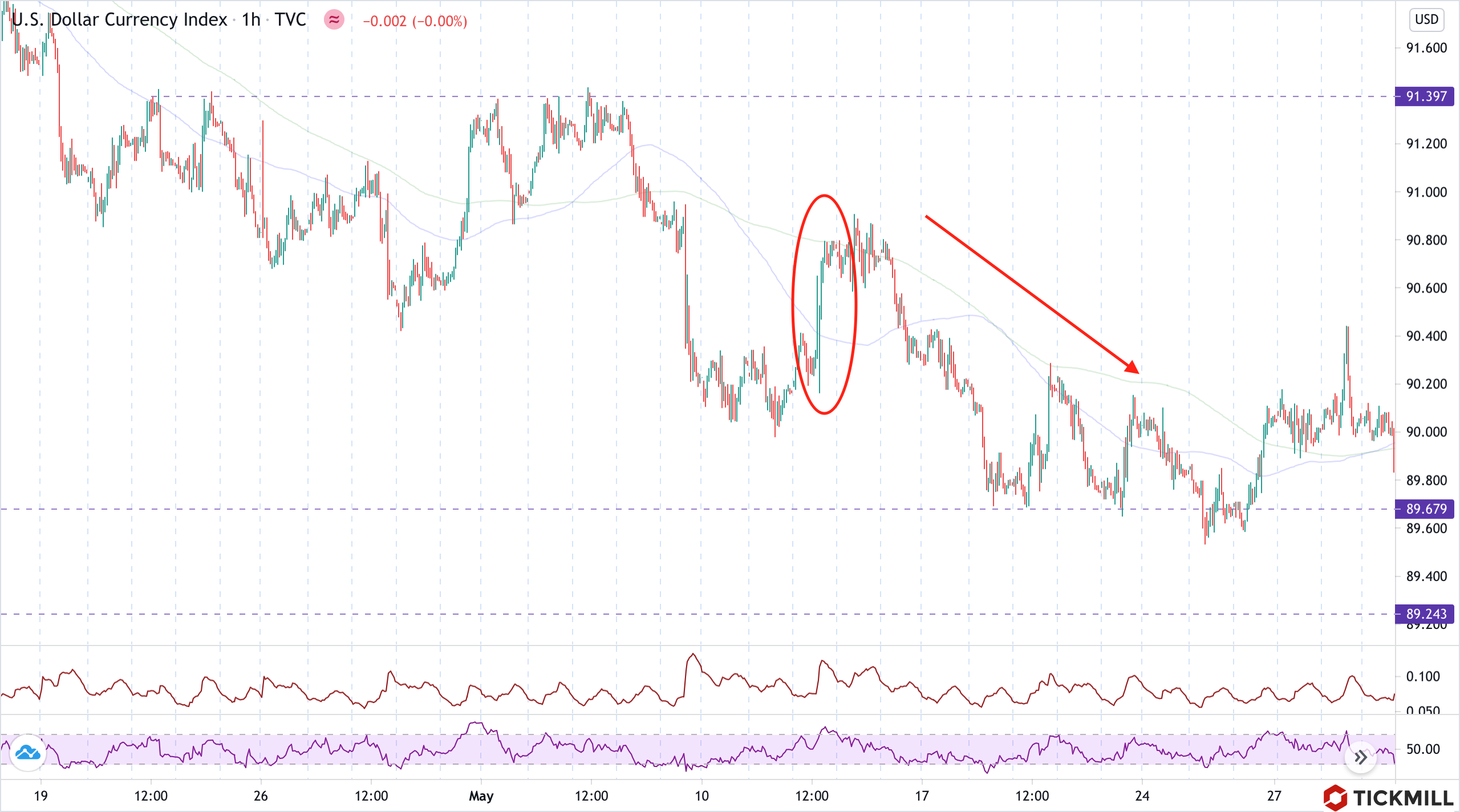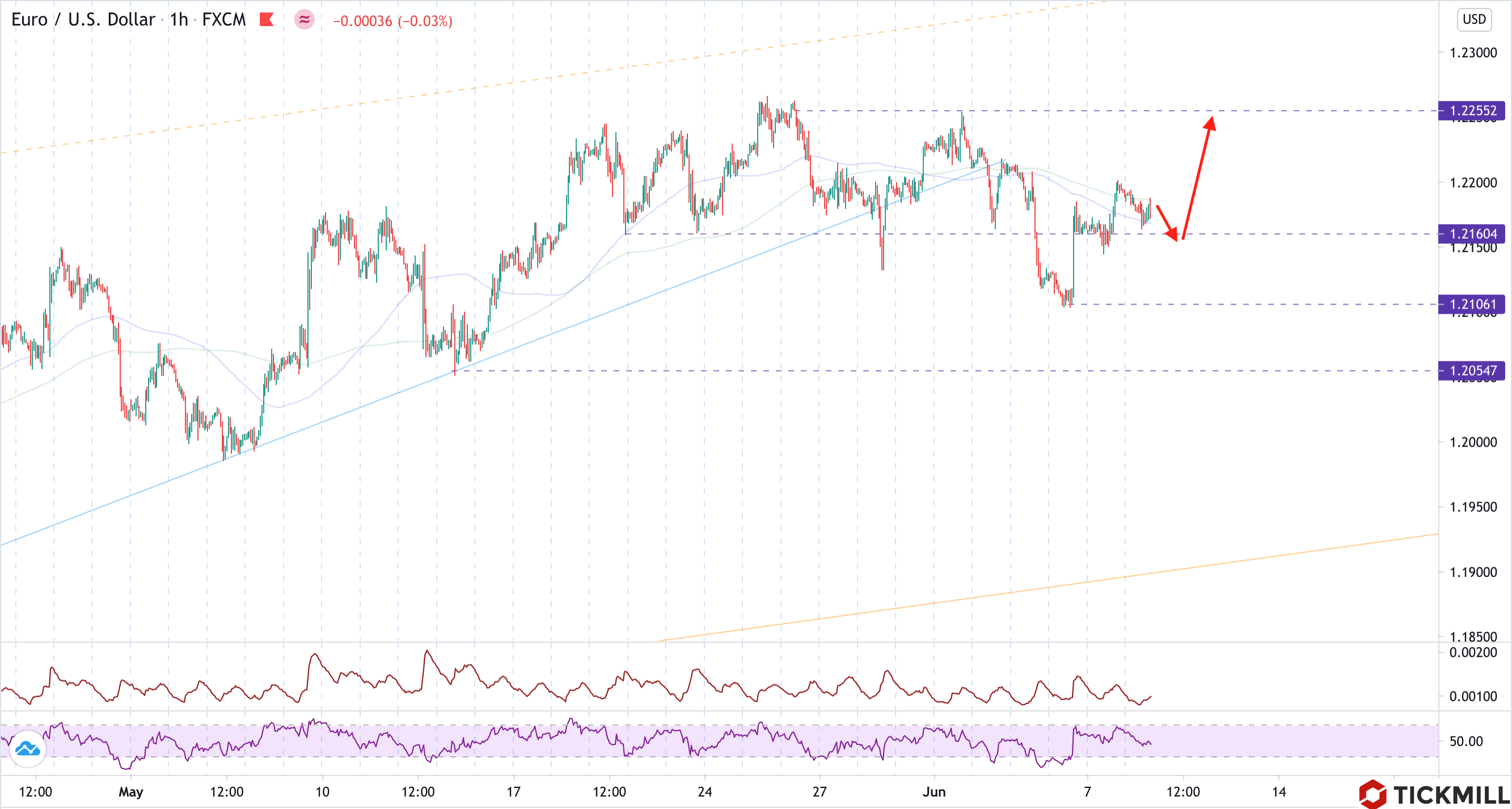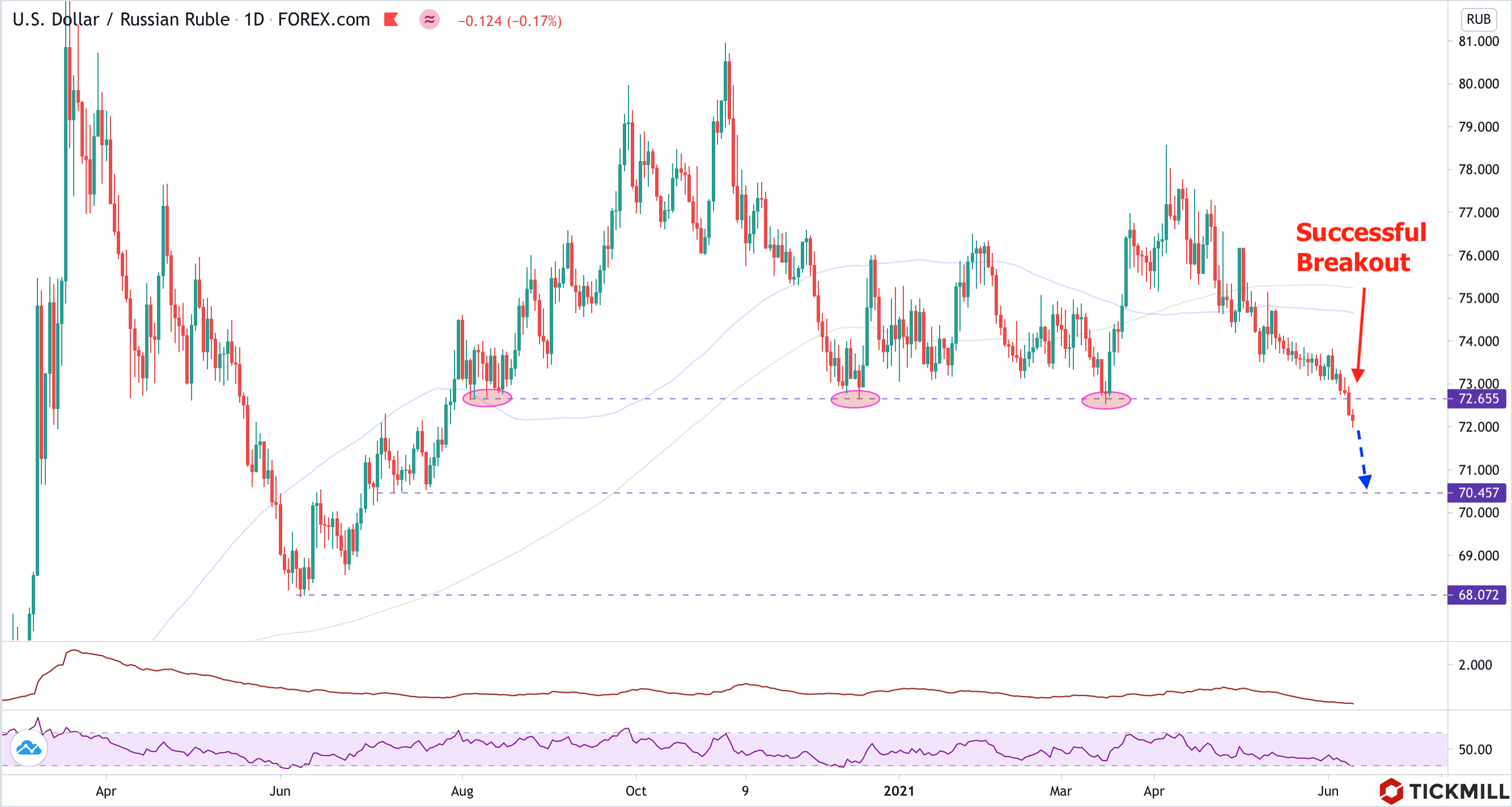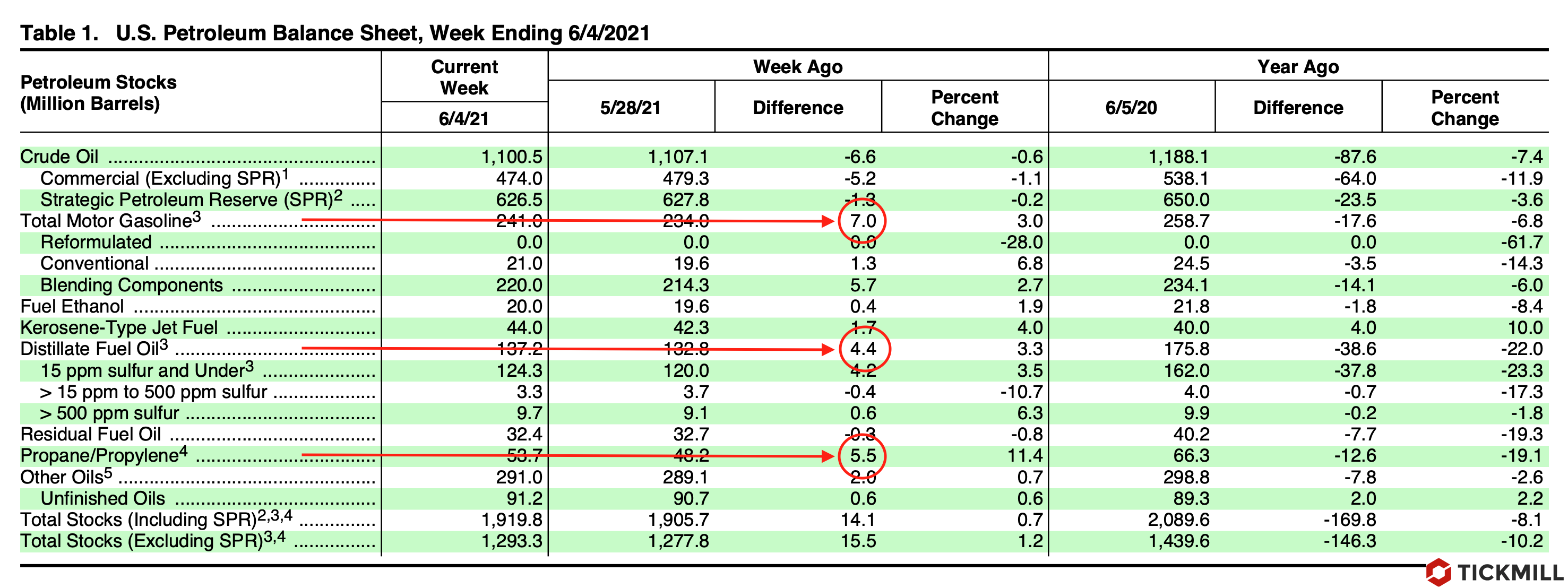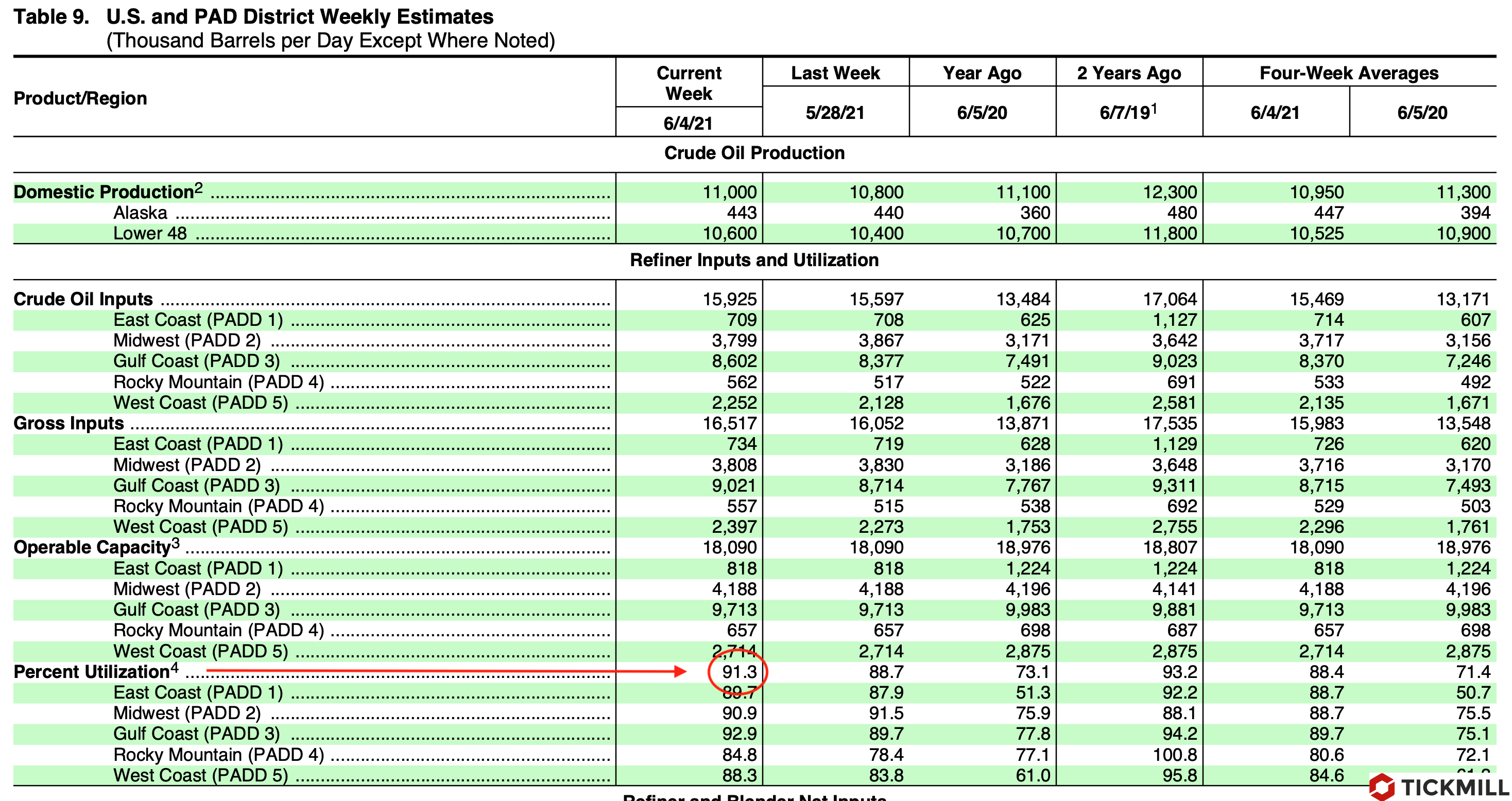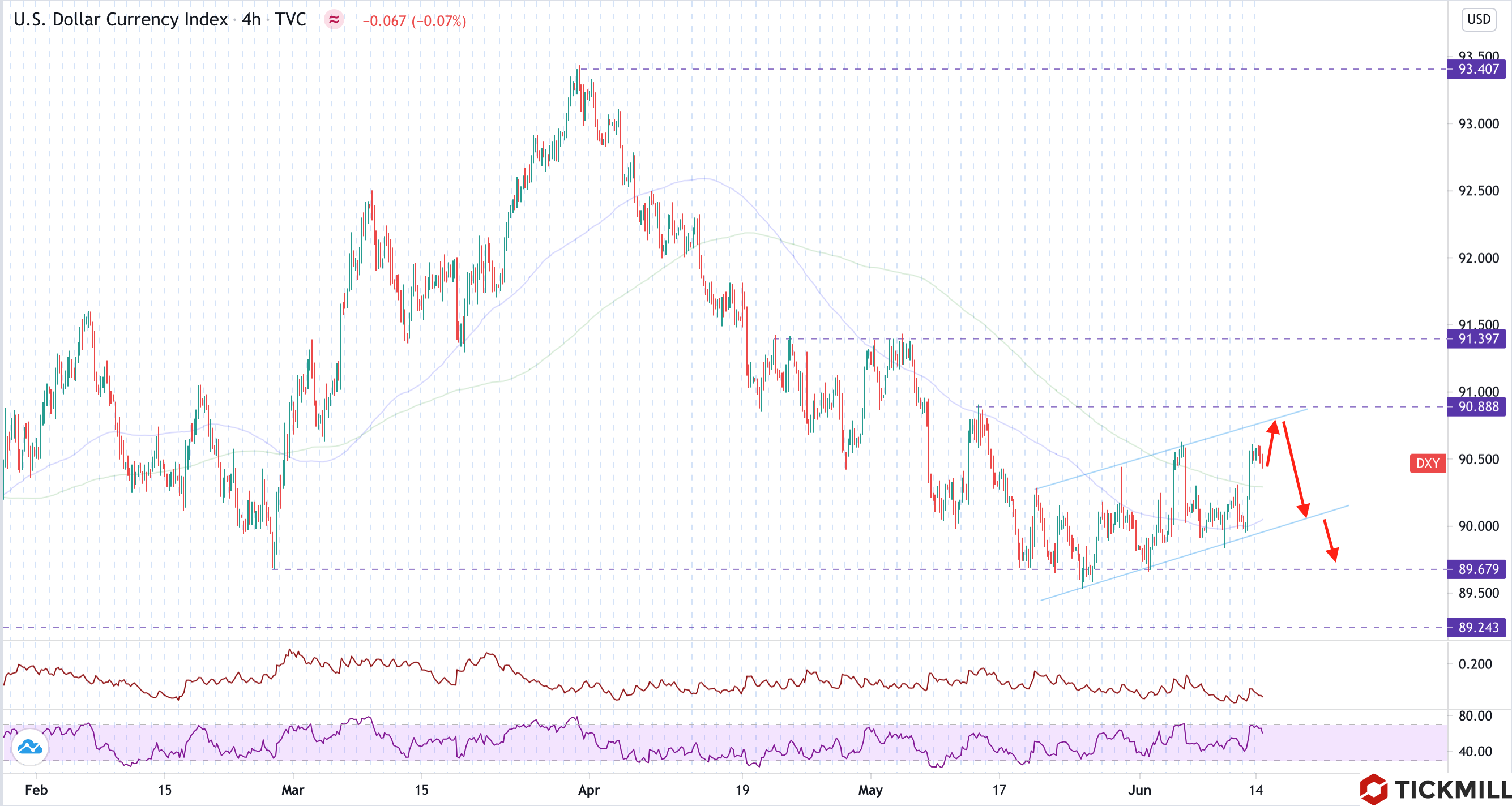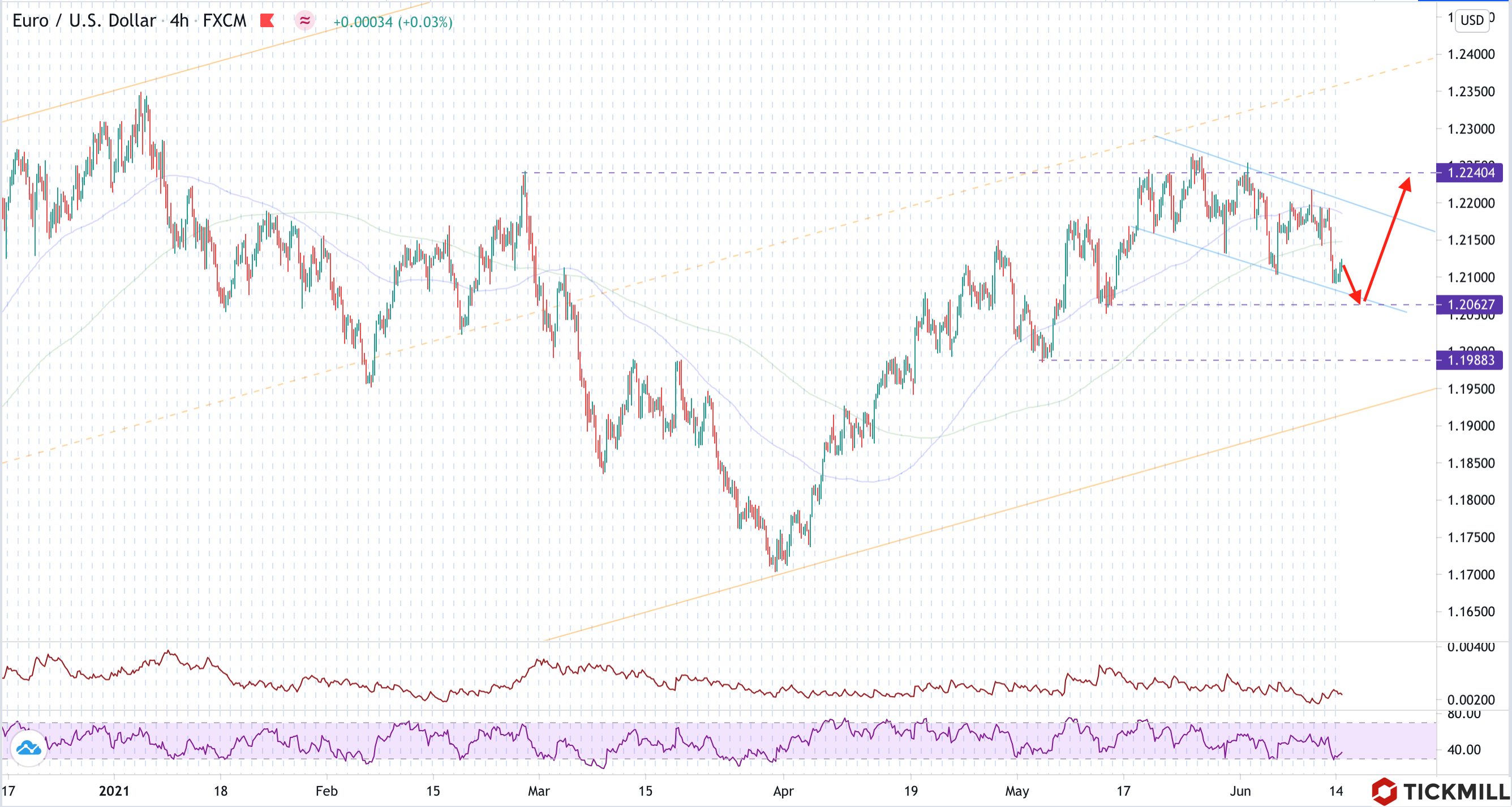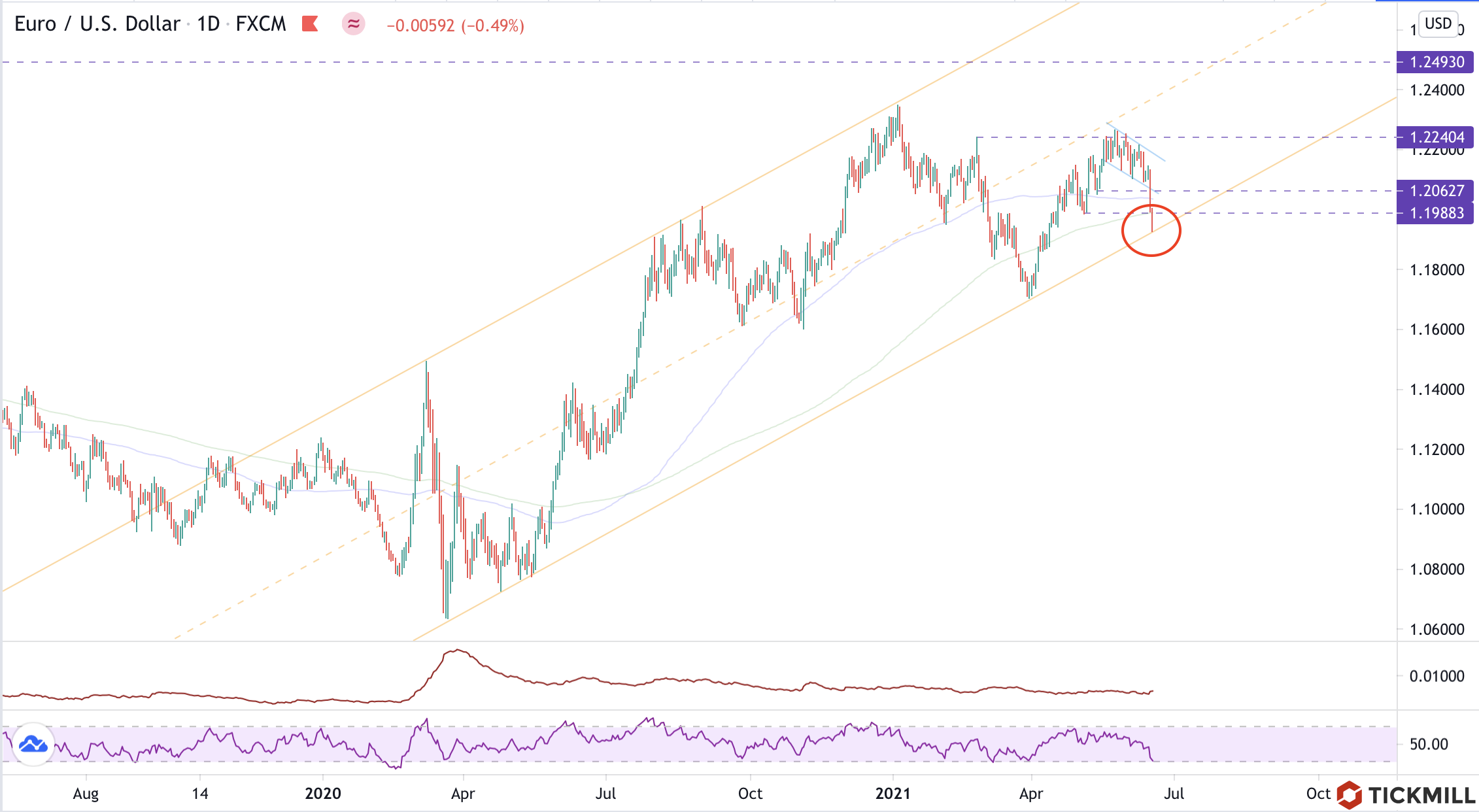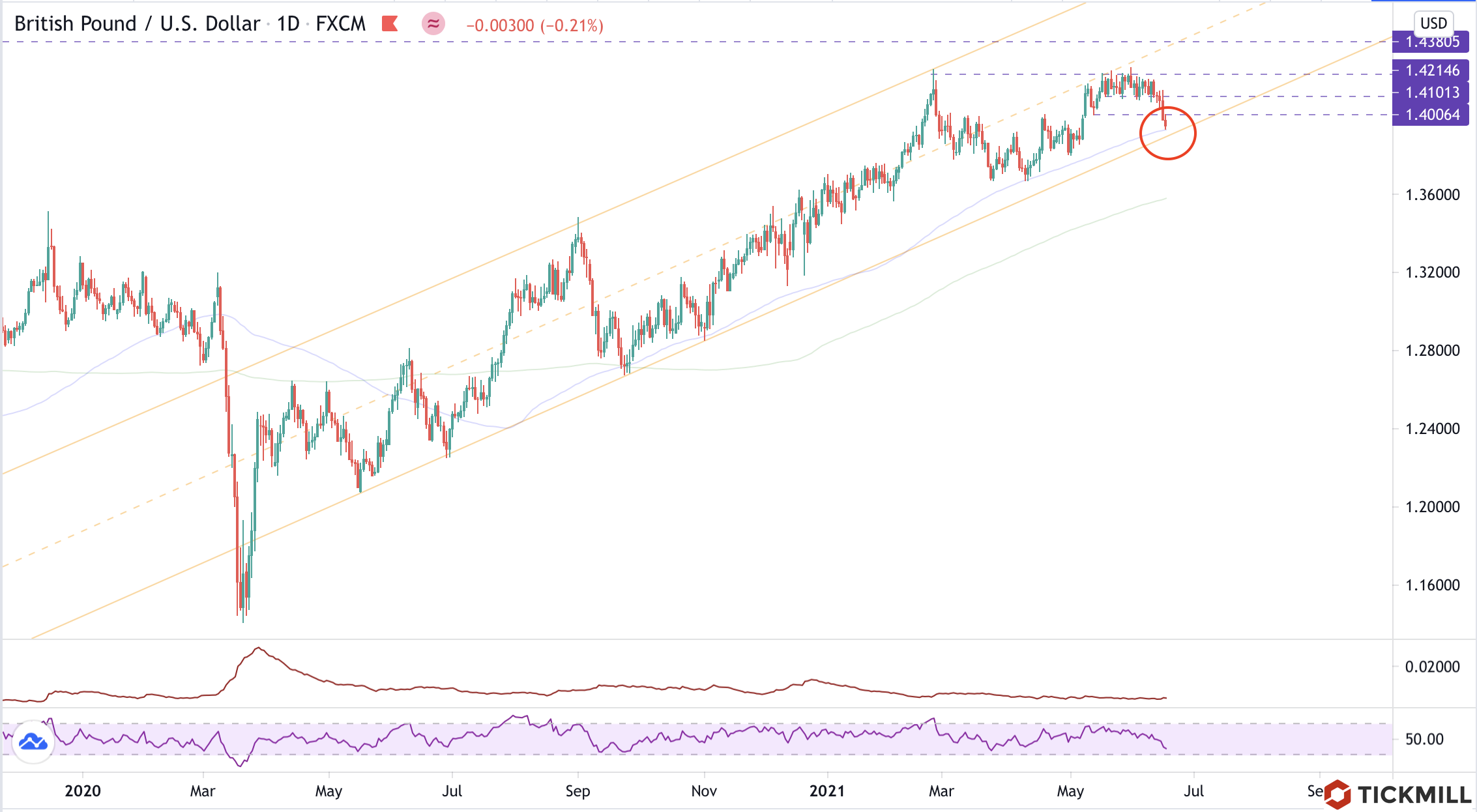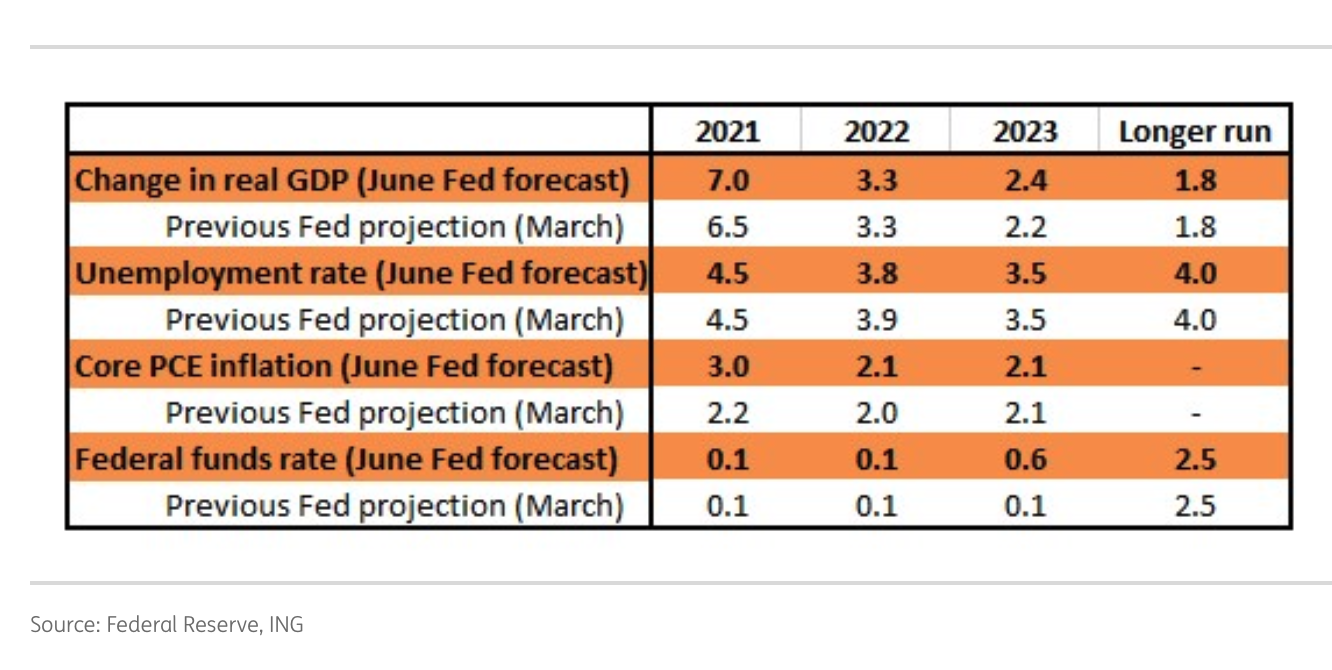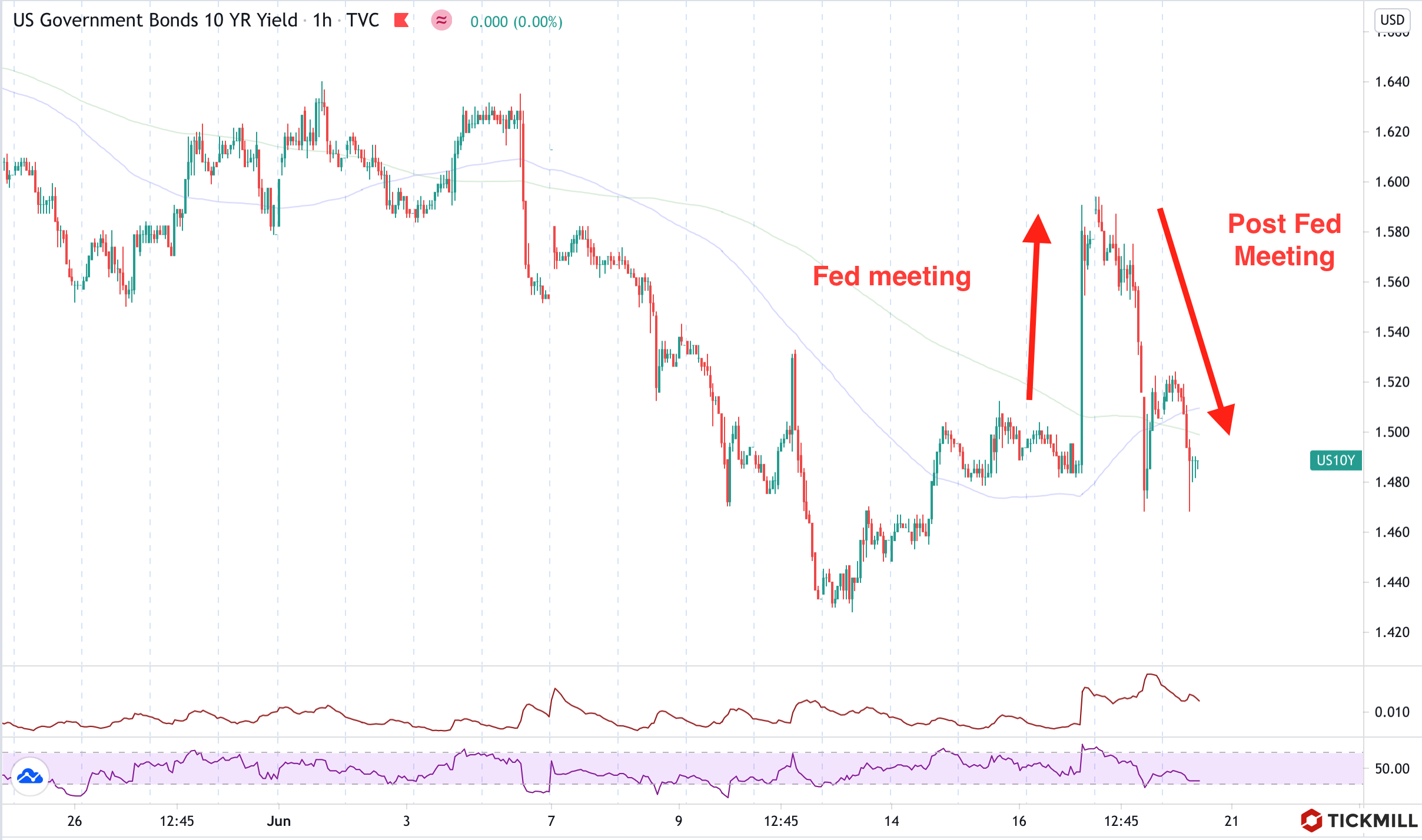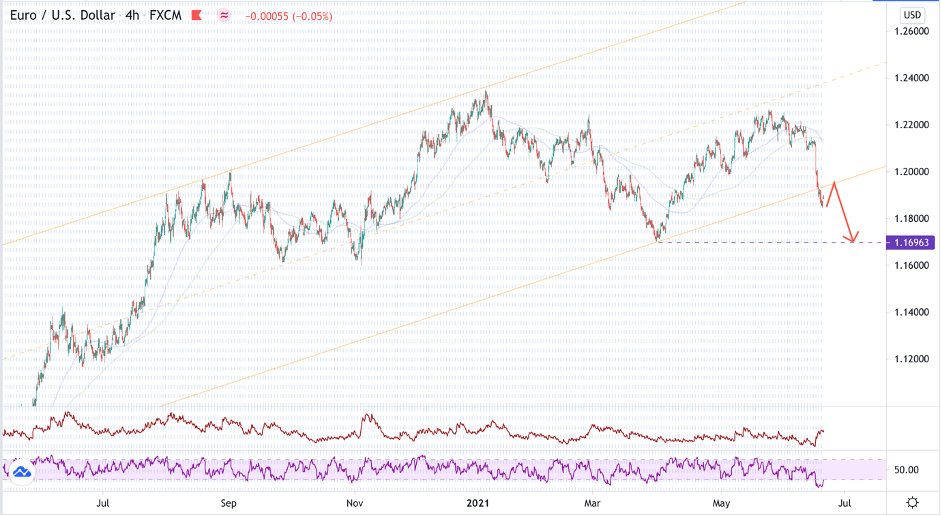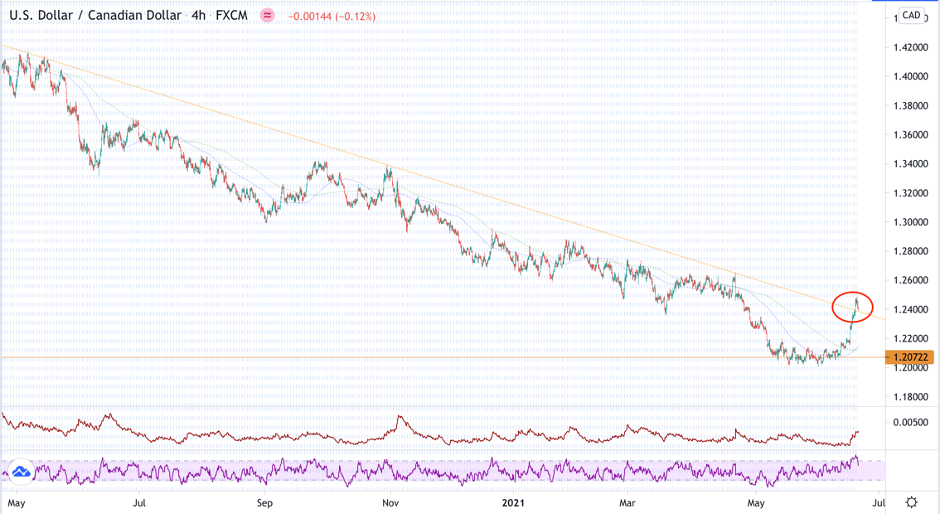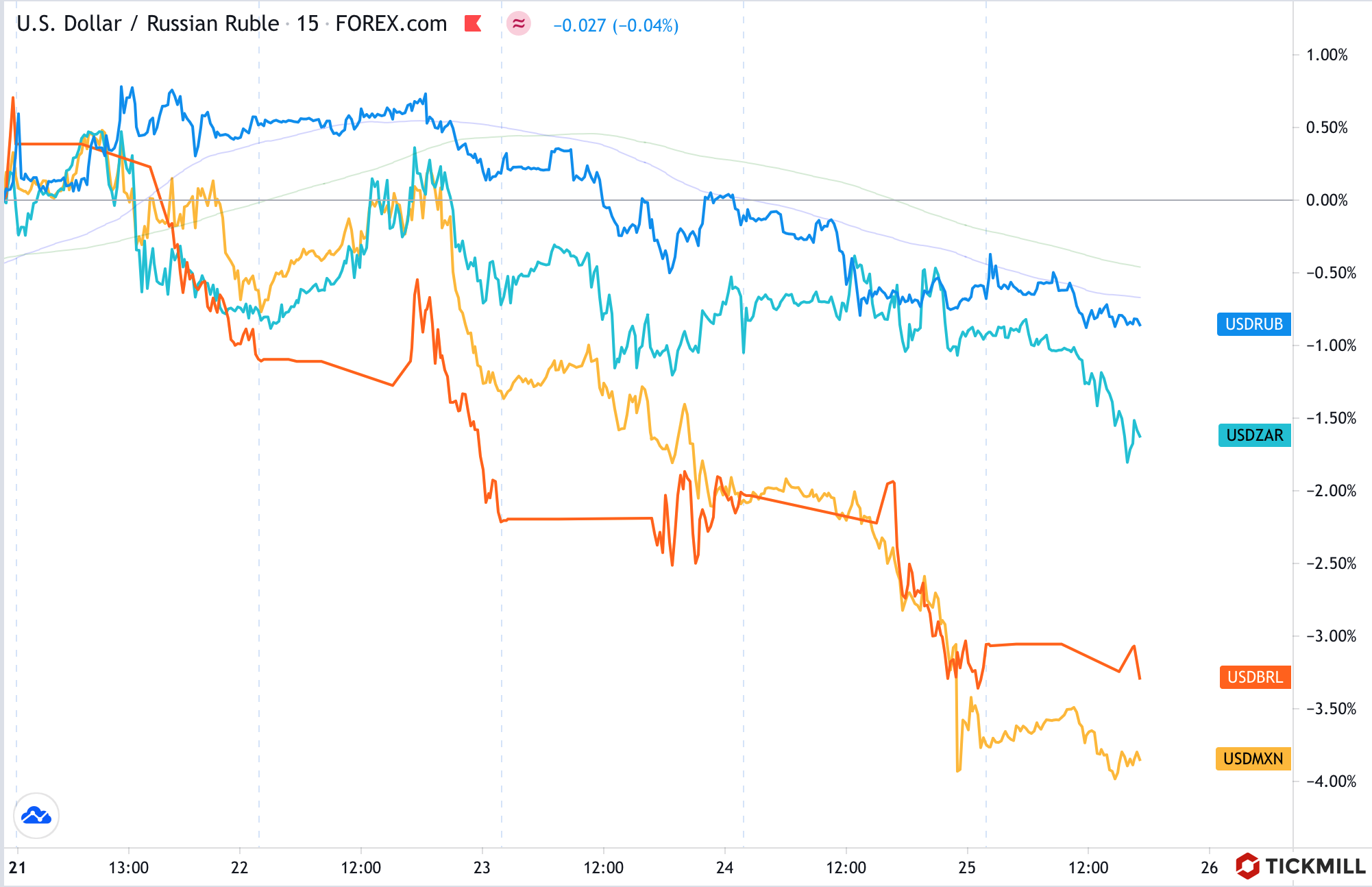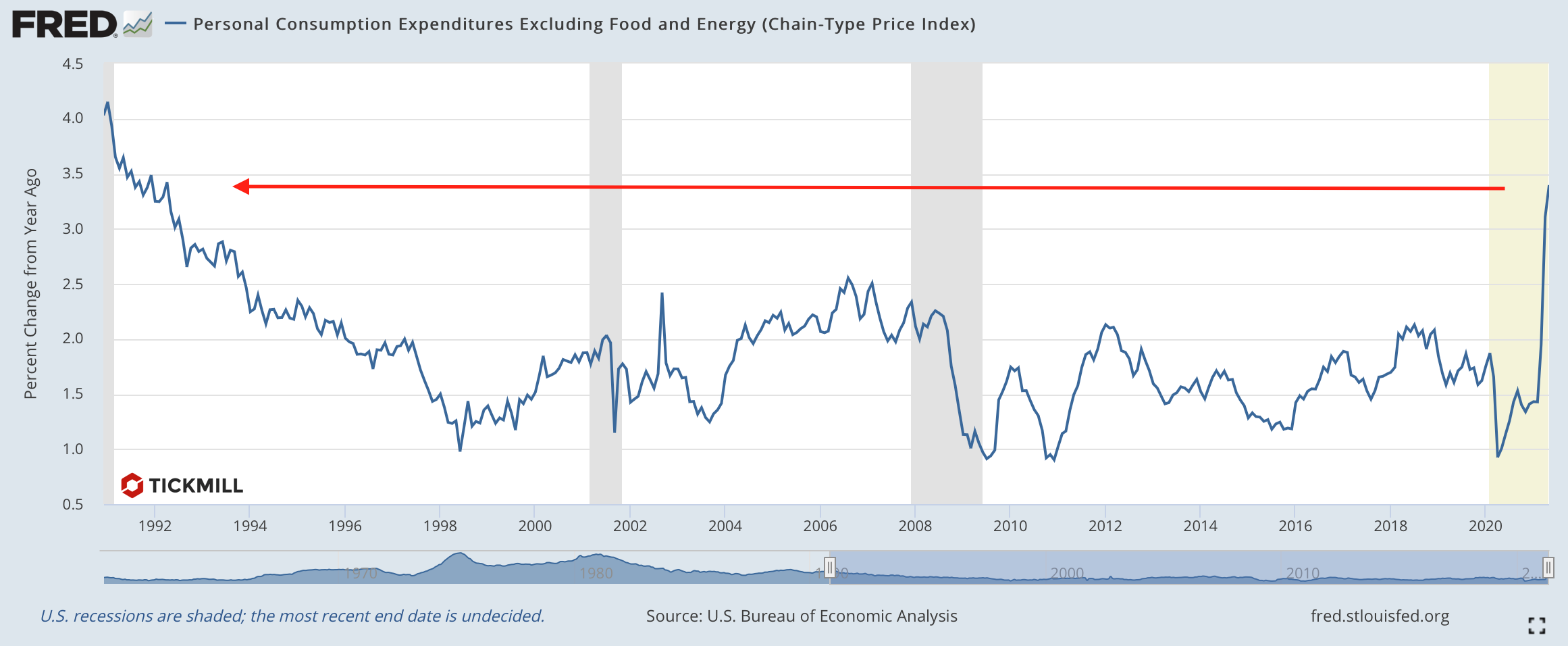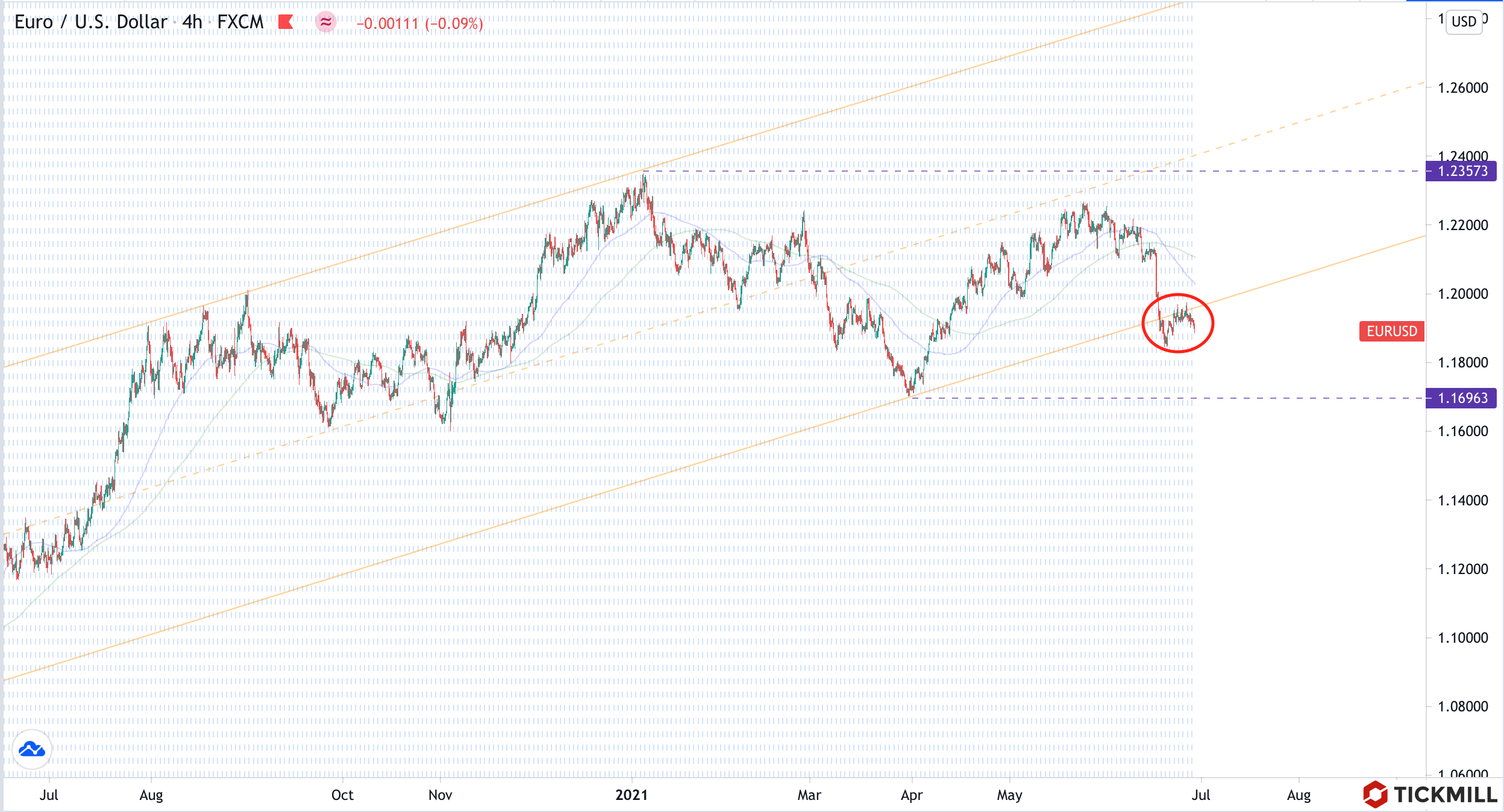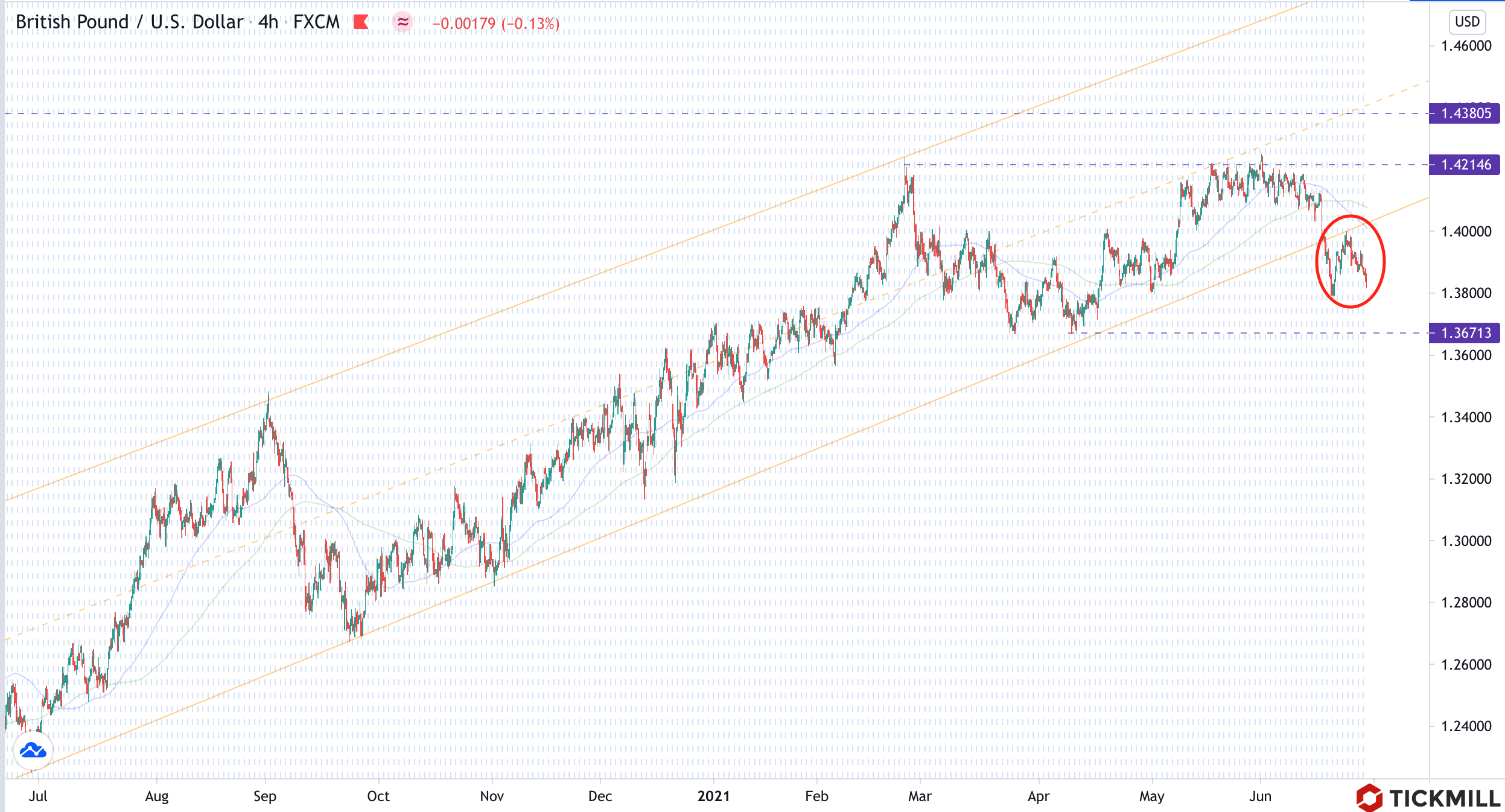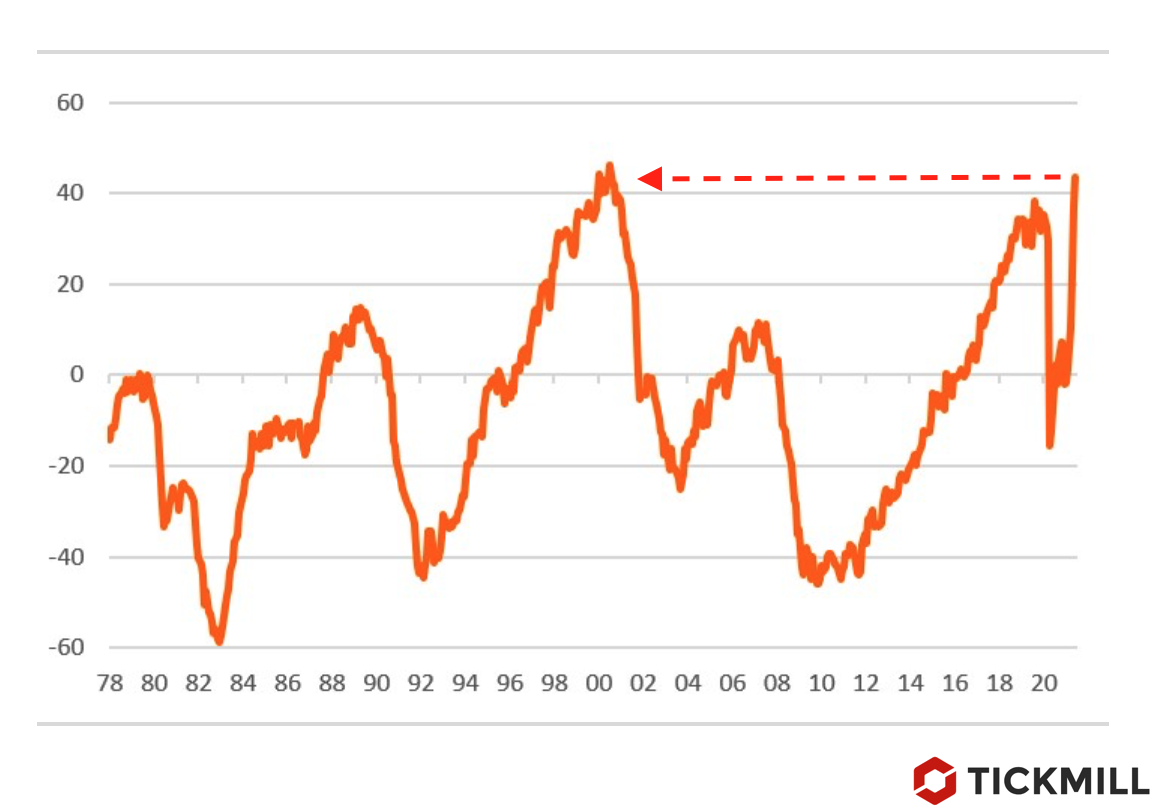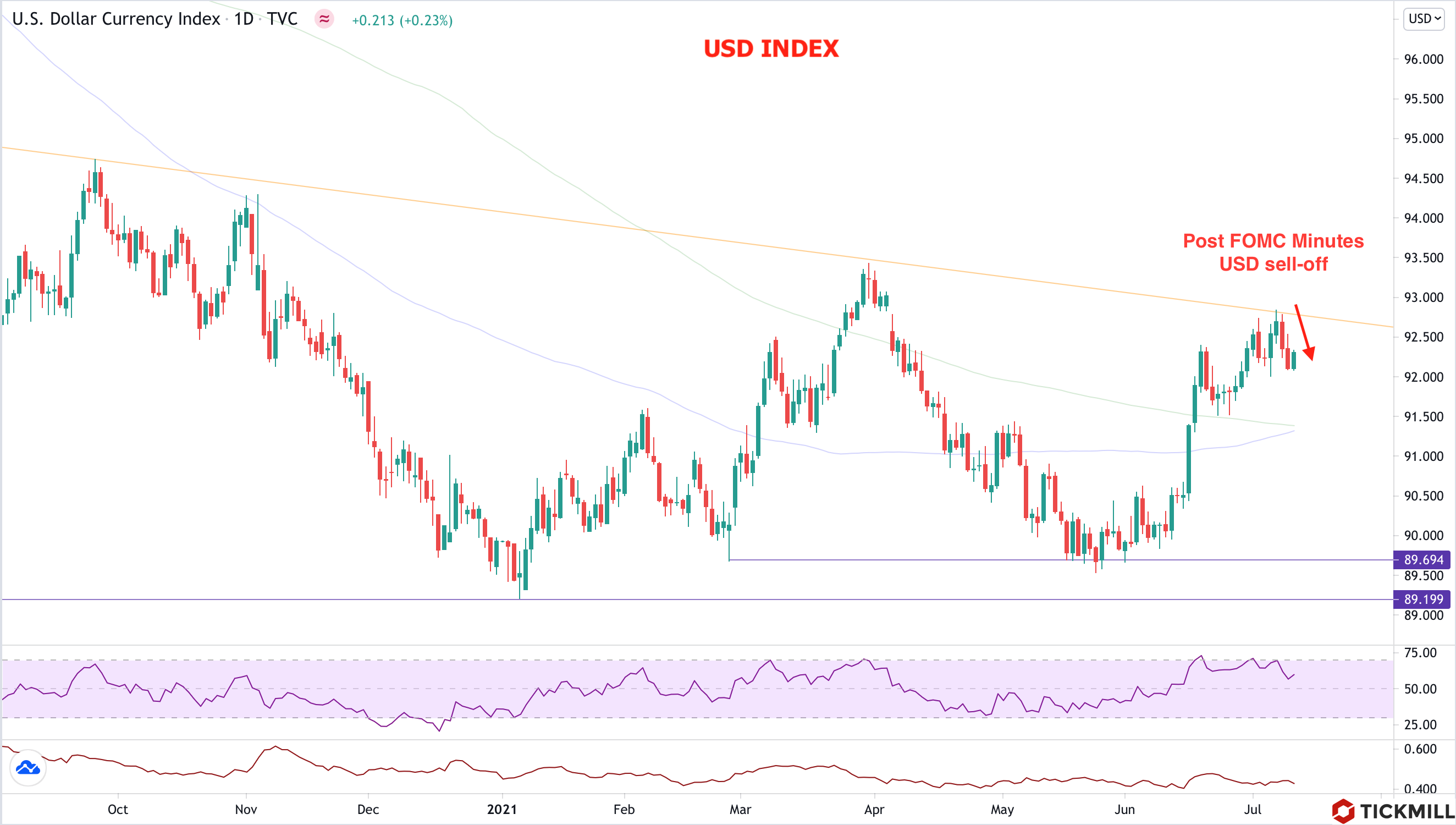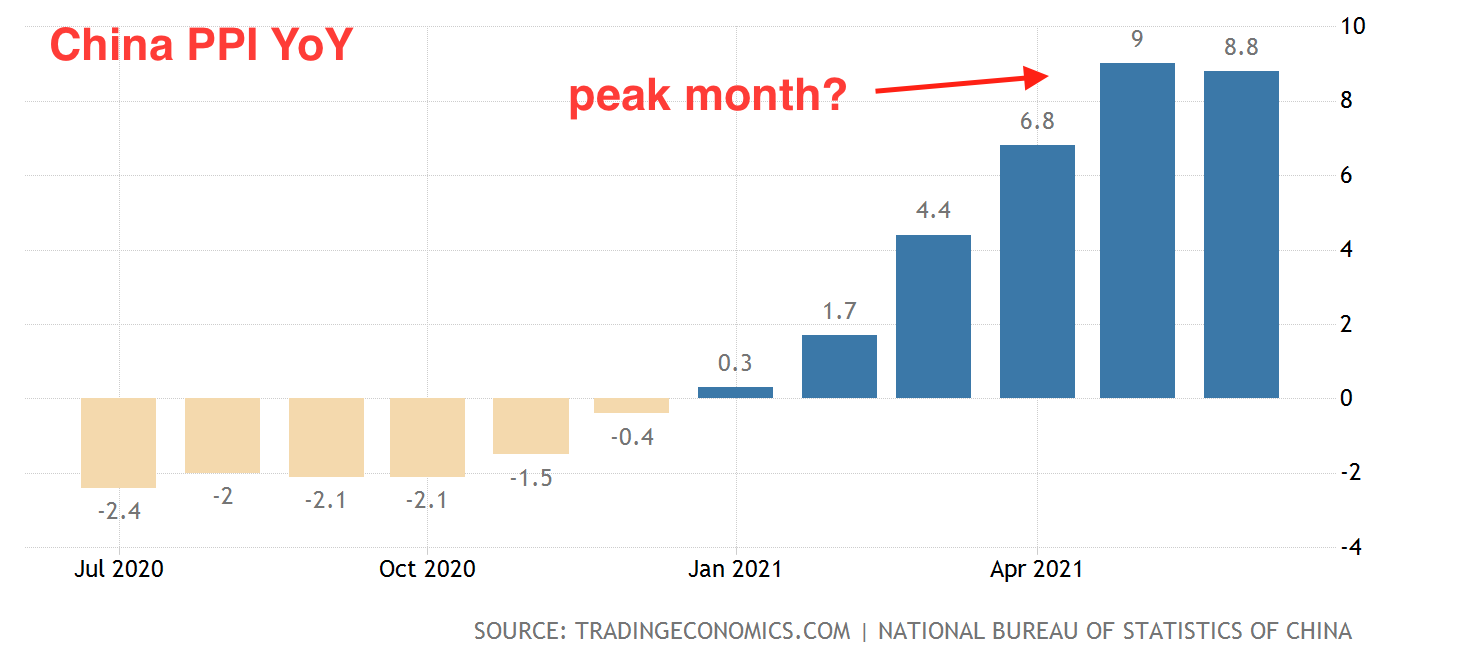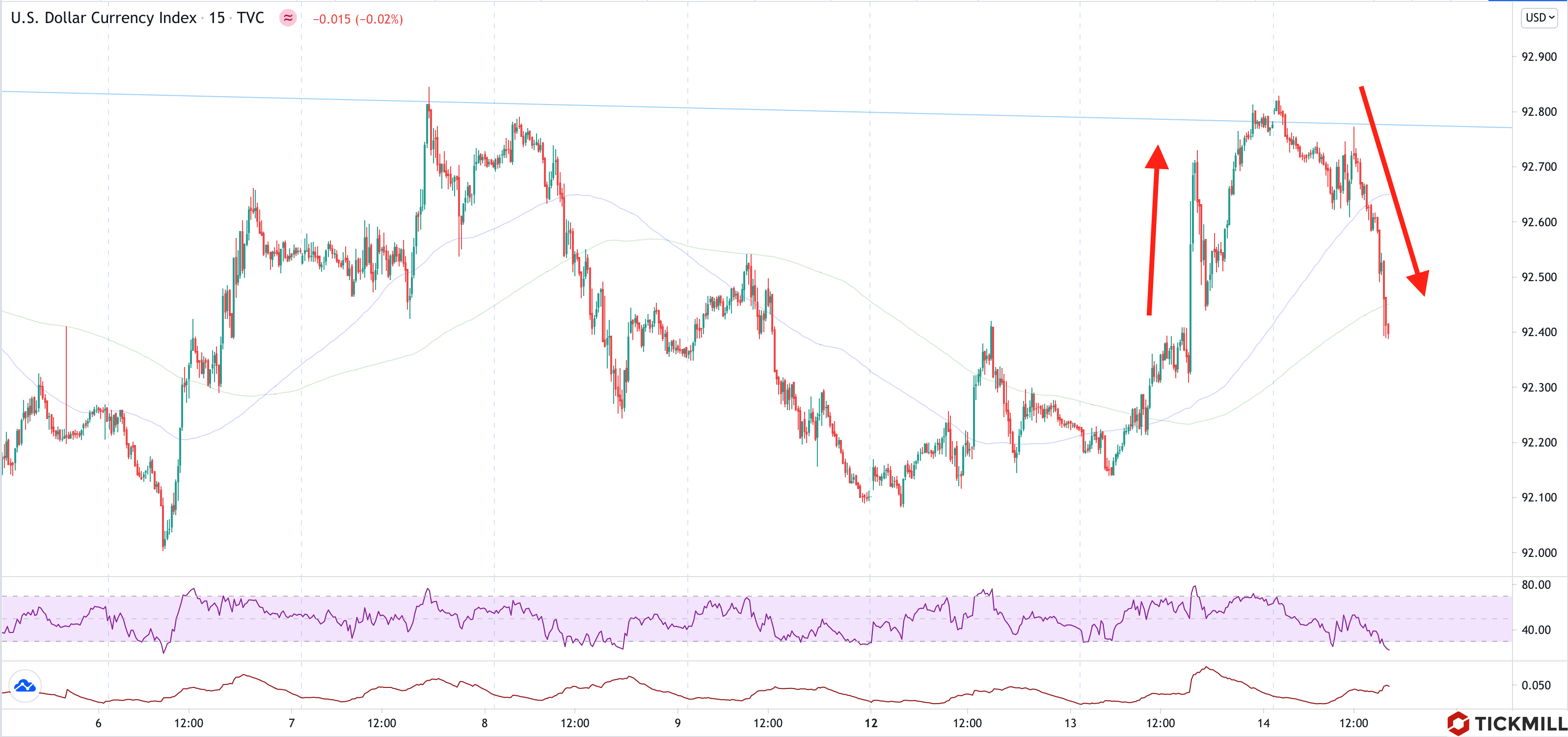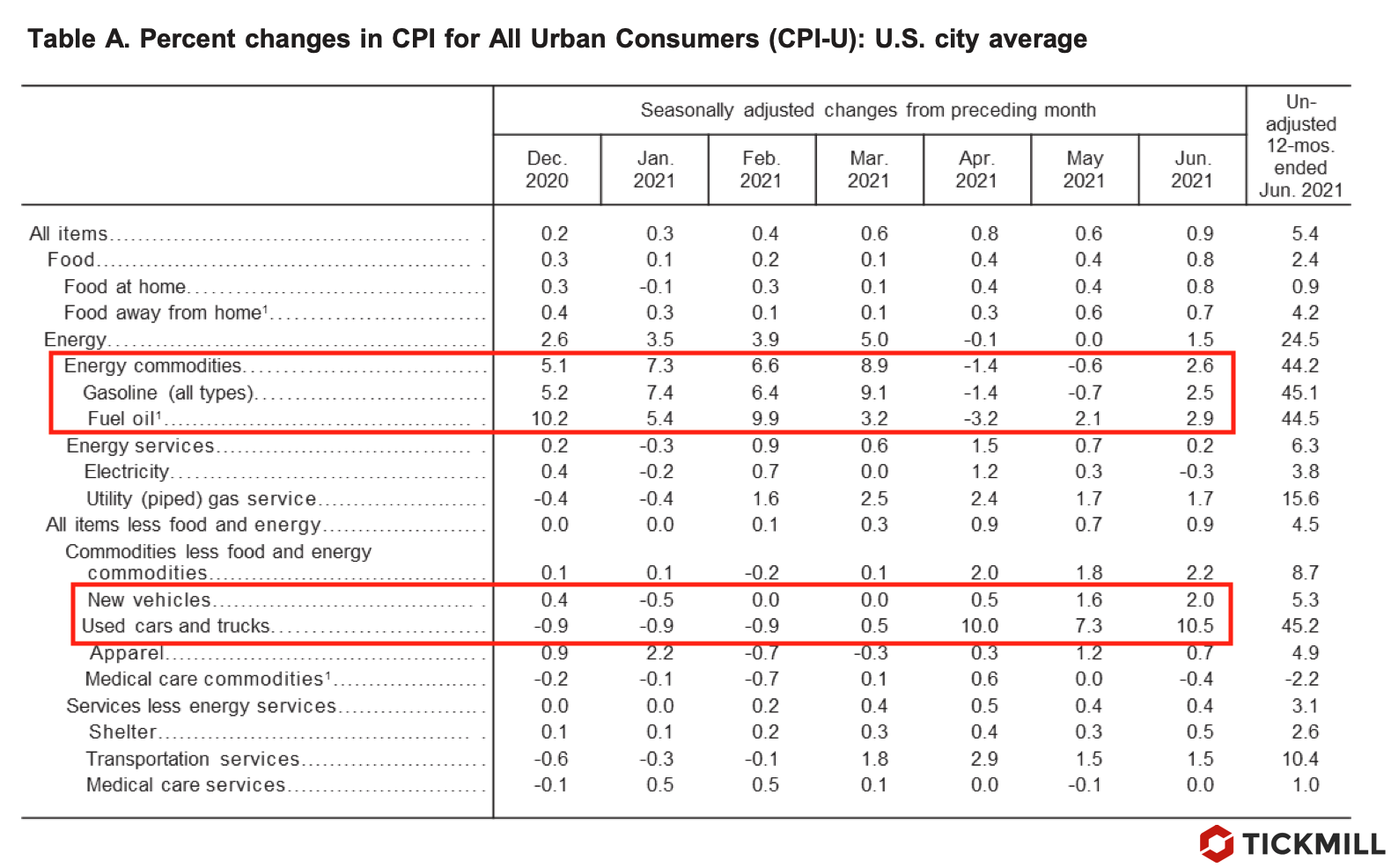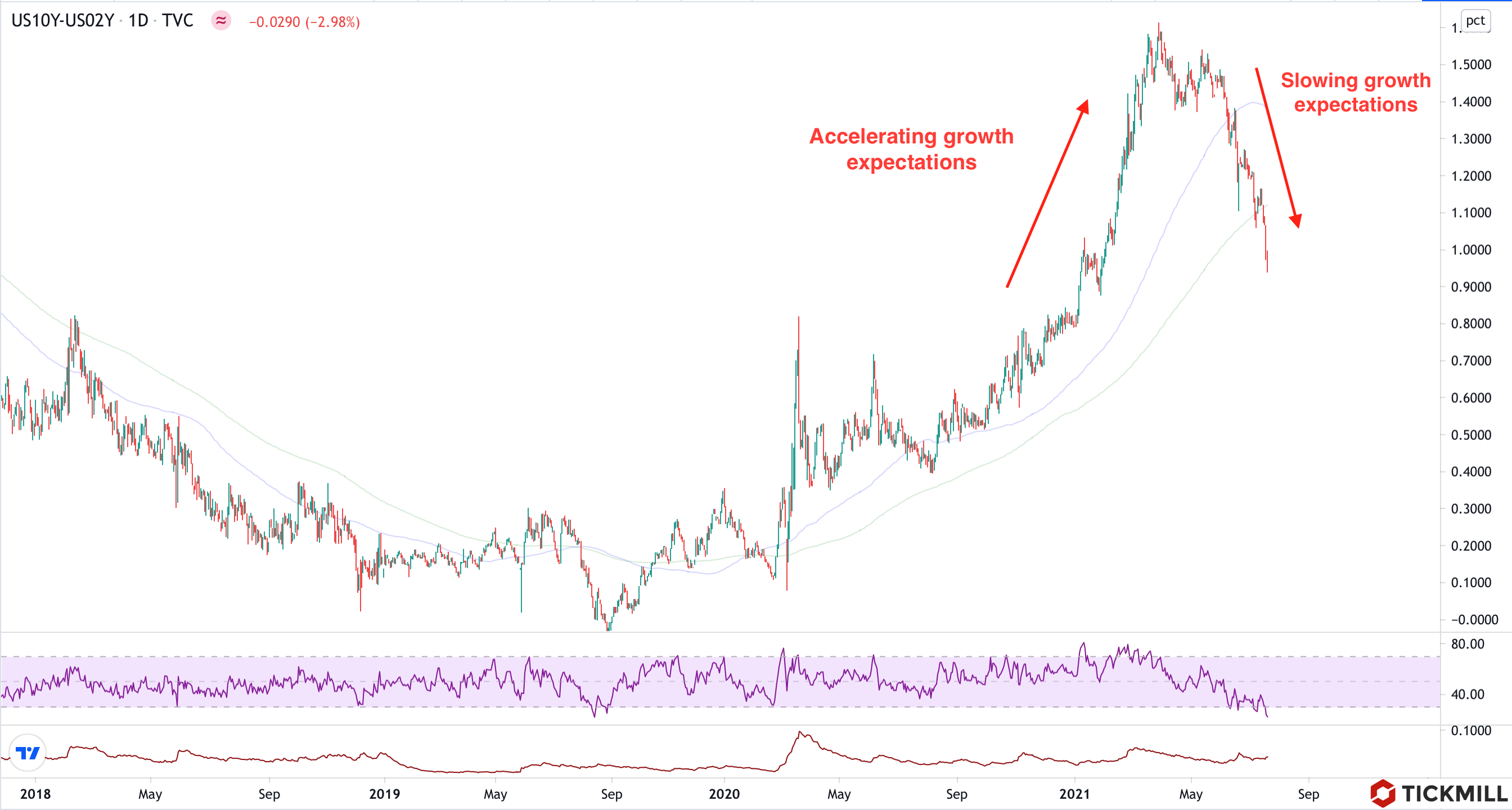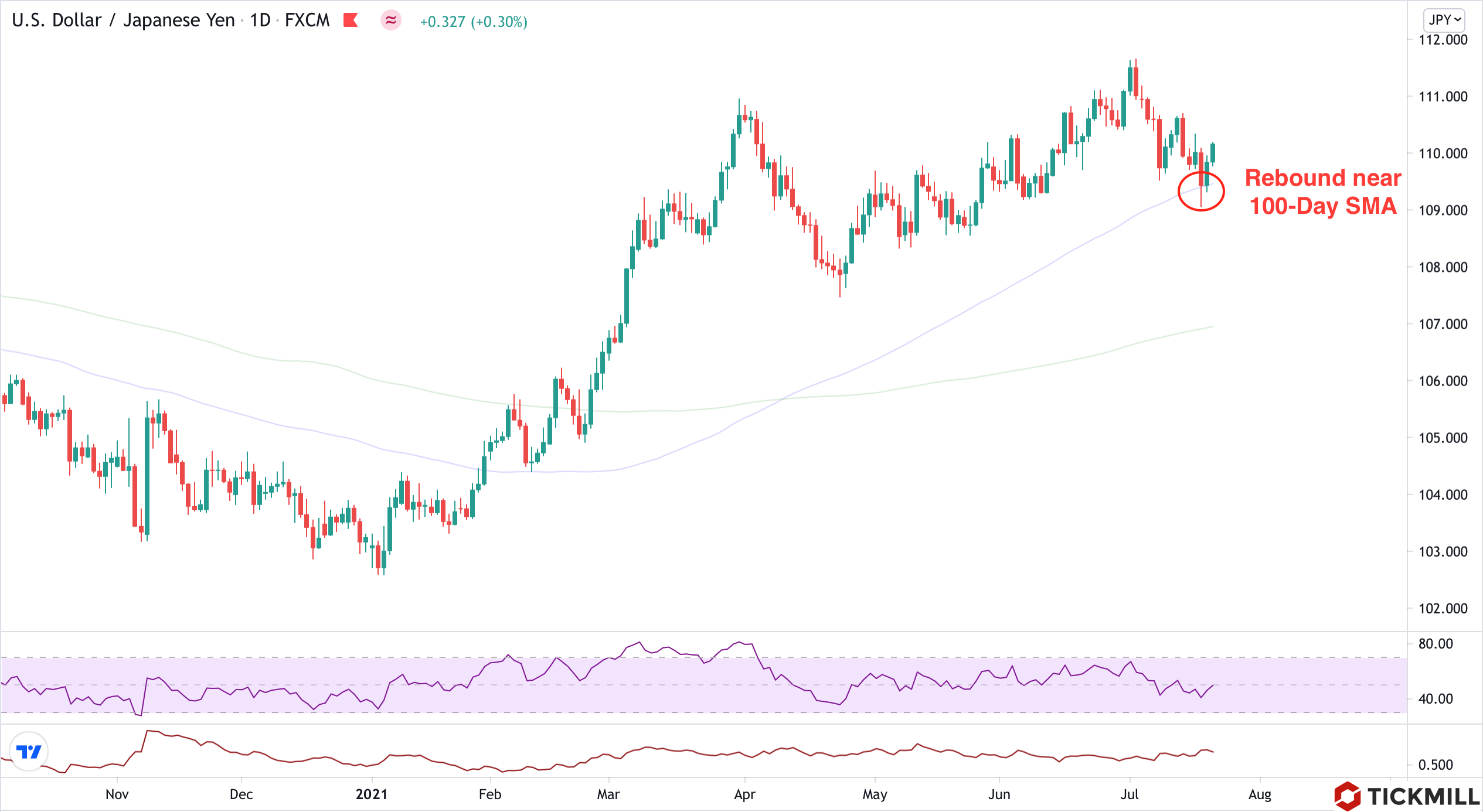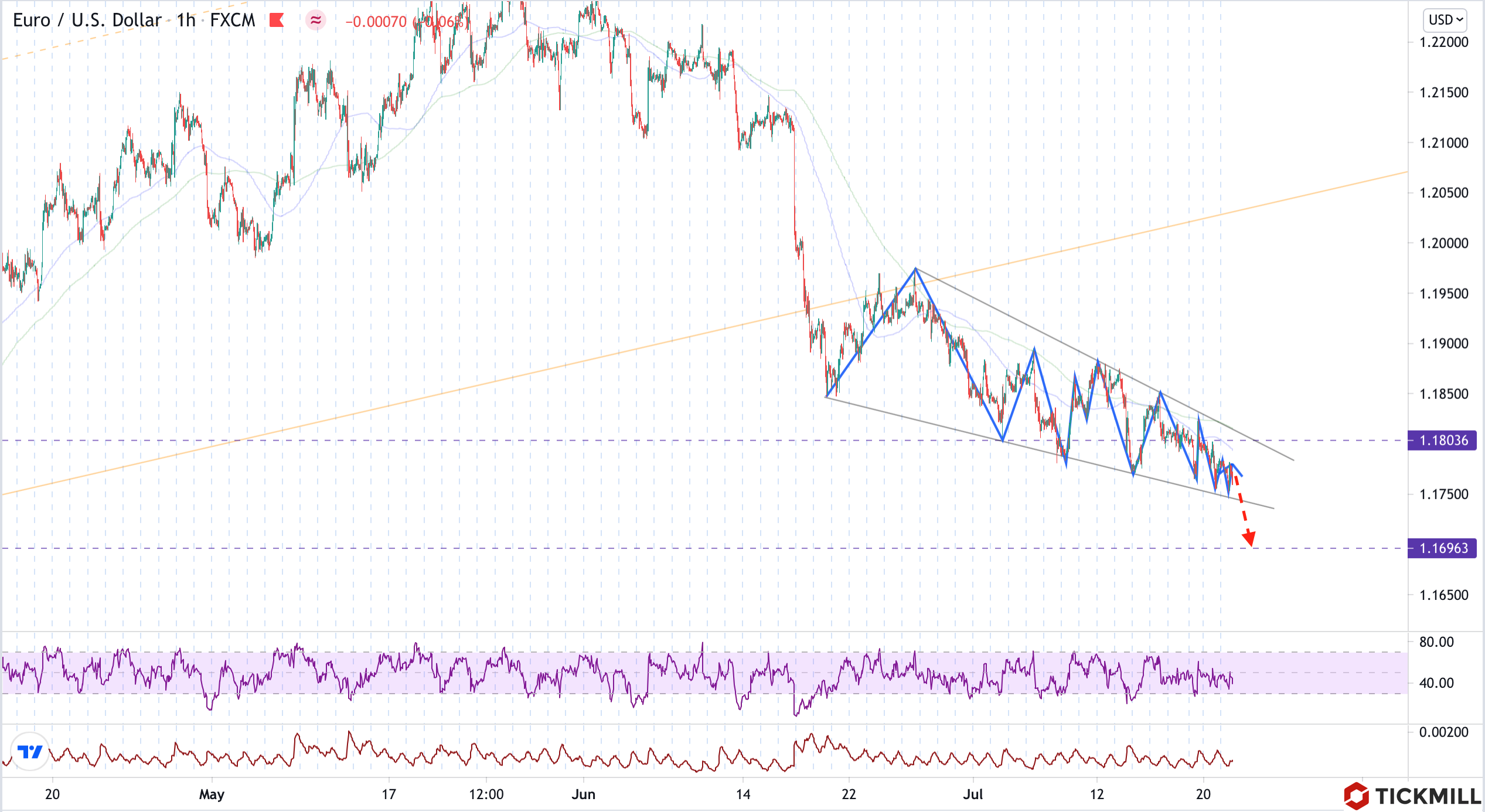tickmill-news
Well-known member
- Messages
- 393
- Likes
- 1
Dollar outlook for the week: more sales ahead of the NFP
On Monday, the dollar index struggles to maintain support at 90 points. The attempt to go up on the inflation report failed miserably on Friday:
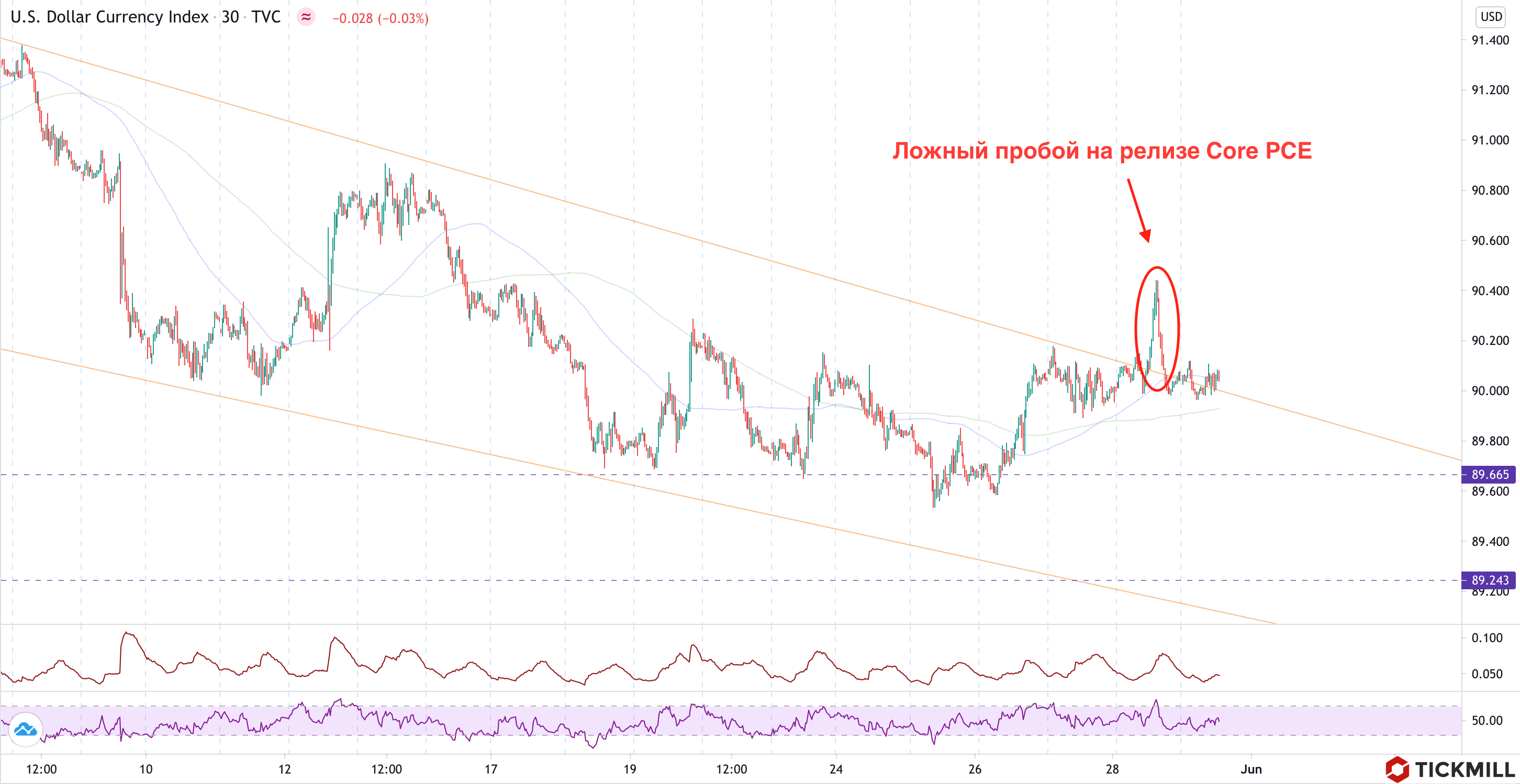
Annual inflation in the US in April was the highest in several decades - +3.1%. At the peak of the previous expansion, in 2006, it was 2.9%. Despite the fact that market forecasts underestimated inflation (2.9% consensus), the debt market received the news rather coolly. The yield of the 10-year Treasuries barely flickered on the report. It would seem that the risk of accelerated inflation rates in the US increased after the report, because of which investors should have demanded an increased yield on long-term Treasuries, but contrary to expectations, the yield fell from 1.61% to 1.59% at the close.
Strong inflation readings in April-May can be explained by the low base effect - in the same month last year the US lockdown was in full swing, which dragged inflation down. Compared to that month, things are looking very good now. The second potential explanation is that investors in the Treasury market believed the Fed's words that inflation was caused by temporary drivers and would soon begin to slow down. Therefore, there is no reason to dump long-term bonds.
However, if we see another increase in inflation rate in May, there will be some kind of trend, so anxiety, most likely, cannot be avoided. Therefore, bear in mind that the markets will most likely start to worry about increased inflation in the coming months.
Important statistics were also released for Asia. China released a manufacturing activity index for May, while South Korea reported factory output. Key findings - costs are growing (cost of raw materials + labor), and the growth of export orders is slowly slowing down. For example, the index of the cost of raw materials rose to 72.8 points (50 is neutral) - this is the maximum since 2010. At the same time, the index of new orders fell to 48.3 points, that is, it became worse than in April. Together, these dynamics tell us that if pickup of commodity prices continue, it will likely be much slower. Rather, stabilization in the market awaits us.
It should also be noted that small firms in China have probably passed the peak of growth rates - their margins are squeezed by rising commodity prices and difficulties in transferring this inflation to the consumer. The index of activity of small firms in China fell from 50.8 immediately to 48.8 points.
The May Non-Farm Payrolls report is also due this week. Weak job growth in April exacerbated the negative trend in the dollar, as the chances of a Fed rate hike diminished. All May because of this, the dollar was under pressure:
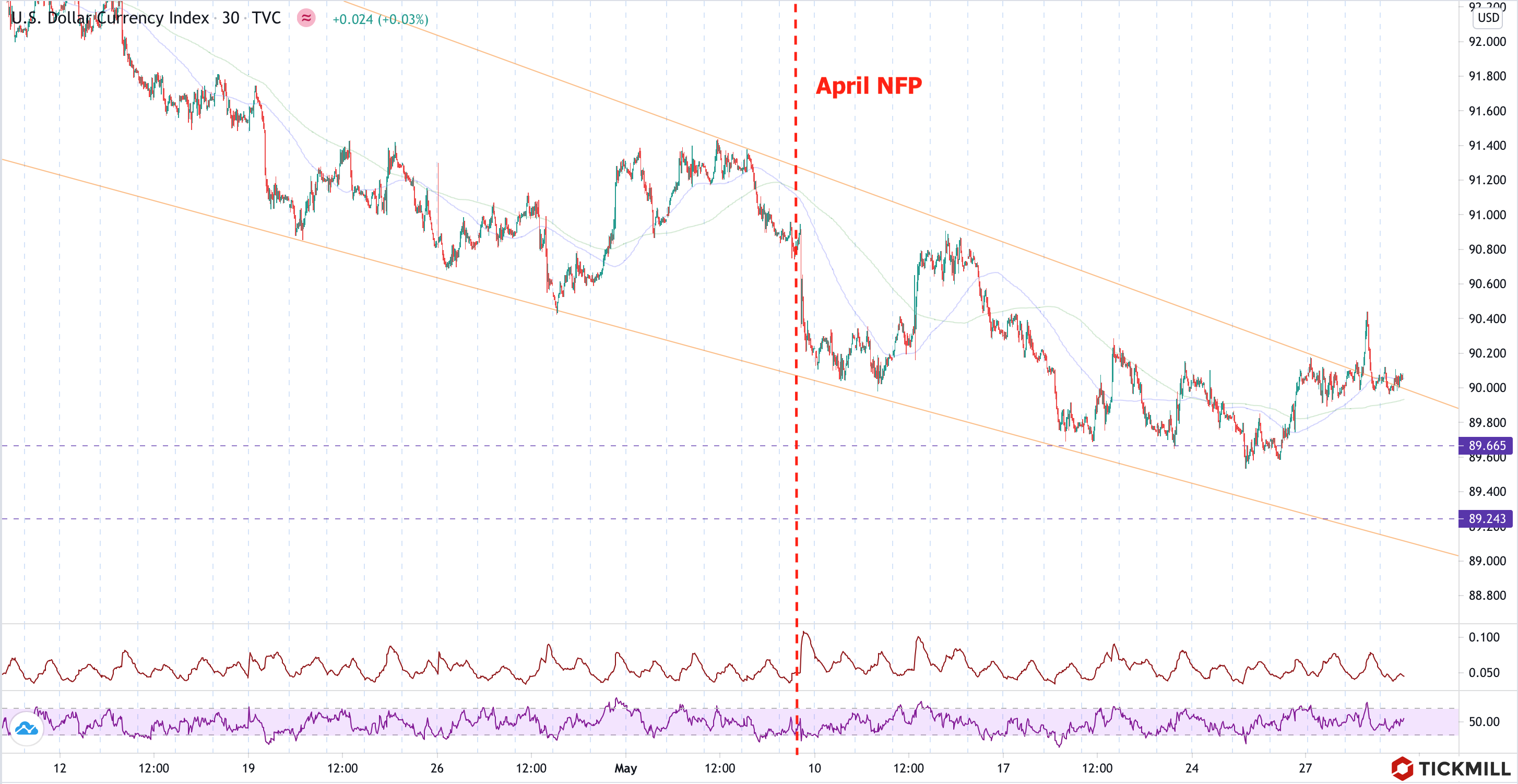
It is highly probable that the foreign exchange market will unravel the consequences of the May report throughout June. The thing is that in April the labor supply lagged behind the demand for labor, so few new jobs were created. Preliminary data for May (jobless claims, hiring indices in PMI reports) shows little change. Therefore, the report may again fall short of expectations. The Fed will have more time to delay with low rates, since their goal is jobs. The dollar could suffer again.
On the technical side, we are using the setup from last Friday. USD index failed to settle above the upper border of the channel on Friday, so the control, I believe, rests with the sellers. Closer to the NFP release, the pressure on the dollar is likely to mount, and we will see a retest of support at 89.65.
Disclaimer: The material provided is for information purposes only and should not be considered as investment advice. The views, information, or opinions expressed in the text belong solely to the author, and not to the author’s employer, organization, committee or other group or individual or company.
High Risk Warning: CFDs are complex instruments and come with a high risk of losing money rapidly due to leverage. 75% and 72% of retail investor accounts lose money when trading CFDs with Tickmill UK Ltd and Tickmill Europe Ltd respectively. You should consider whether you understand how CFDs work and whether you can afford to take the high risk of losing your money.
On Monday, the dollar index struggles to maintain support at 90 points. The attempt to go up on the inflation report failed miserably on Friday:

Annual inflation in the US in April was the highest in several decades - +3.1%. At the peak of the previous expansion, in 2006, it was 2.9%. Despite the fact that market forecasts underestimated inflation (2.9% consensus), the debt market received the news rather coolly. The yield of the 10-year Treasuries barely flickered on the report. It would seem that the risk of accelerated inflation rates in the US increased after the report, because of which investors should have demanded an increased yield on long-term Treasuries, but contrary to expectations, the yield fell from 1.61% to 1.59% at the close.
Strong inflation readings in April-May can be explained by the low base effect - in the same month last year the US lockdown was in full swing, which dragged inflation down. Compared to that month, things are looking very good now. The second potential explanation is that investors in the Treasury market believed the Fed's words that inflation was caused by temporary drivers and would soon begin to slow down. Therefore, there is no reason to dump long-term bonds.
However, if we see another increase in inflation rate in May, there will be some kind of trend, so anxiety, most likely, cannot be avoided. Therefore, bear in mind that the markets will most likely start to worry about increased inflation in the coming months.
Important statistics were also released for Asia. China released a manufacturing activity index for May, while South Korea reported factory output. Key findings - costs are growing (cost of raw materials + labor), and the growth of export orders is slowly slowing down. For example, the index of the cost of raw materials rose to 72.8 points (50 is neutral) - this is the maximum since 2010. At the same time, the index of new orders fell to 48.3 points, that is, it became worse than in April. Together, these dynamics tell us that if pickup of commodity prices continue, it will likely be much slower. Rather, stabilization in the market awaits us.
It should also be noted that small firms in China have probably passed the peak of growth rates - their margins are squeezed by rising commodity prices and difficulties in transferring this inflation to the consumer. The index of activity of small firms in China fell from 50.8 immediately to 48.8 points.
The May Non-Farm Payrolls report is also due this week. Weak job growth in April exacerbated the negative trend in the dollar, as the chances of a Fed rate hike diminished. All May because of this, the dollar was under pressure:

It is highly probable that the foreign exchange market will unravel the consequences of the May report throughout June. The thing is that in April the labor supply lagged behind the demand for labor, so few new jobs were created. Preliminary data for May (jobless claims, hiring indices in PMI reports) shows little change. Therefore, the report may again fall short of expectations. The Fed will have more time to delay with low rates, since their goal is jobs. The dollar could suffer again.
On the technical side, we are using the setup from last Friday. USD index failed to settle above the upper border of the channel on Friday, so the control, I believe, rests with the sellers. Closer to the NFP release, the pressure on the dollar is likely to mount, and we will see a retest of support at 89.65.
Disclaimer: The material provided is for information purposes only and should not be considered as investment advice. The views, information, or opinions expressed in the text belong solely to the author, and not to the author’s employer, organization, committee or other group or individual or company.
High Risk Warning: CFDs are complex instruments and come with a high risk of losing money rapidly due to leverage. 75% and 72% of retail investor accounts lose money when trading CFDs with Tickmill UK Ltd and Tickmill Europe Ltd respectively. You should consider whether you understand how CFDs work and whether you can afford to take the high risk of losing your money.

